Empty walls present boundless opportunities for transformation, and paint remains the most versatile medium to reinvent any interior space with color, pattern, or texture. This article explores twenty inventive wall painting ideas—from luxurious faux marble treatments and bold accent walls to intricate geometric designs and culturally rich Mandana art—that suit bedrooms, living rooms, kitchens, and beyond. Whether you aim for subtle tone-on-tone sophistication or dramatic color drenching, each concept is accompanied by clear guidance and creative tips drawn from expert sources. Harnessing these techniques, homeowners of all skill levels can achieve striking, personalized results on a budget, elevating any room with minimal materials and maximum impact.
1. DIY Marble Wall Treatment
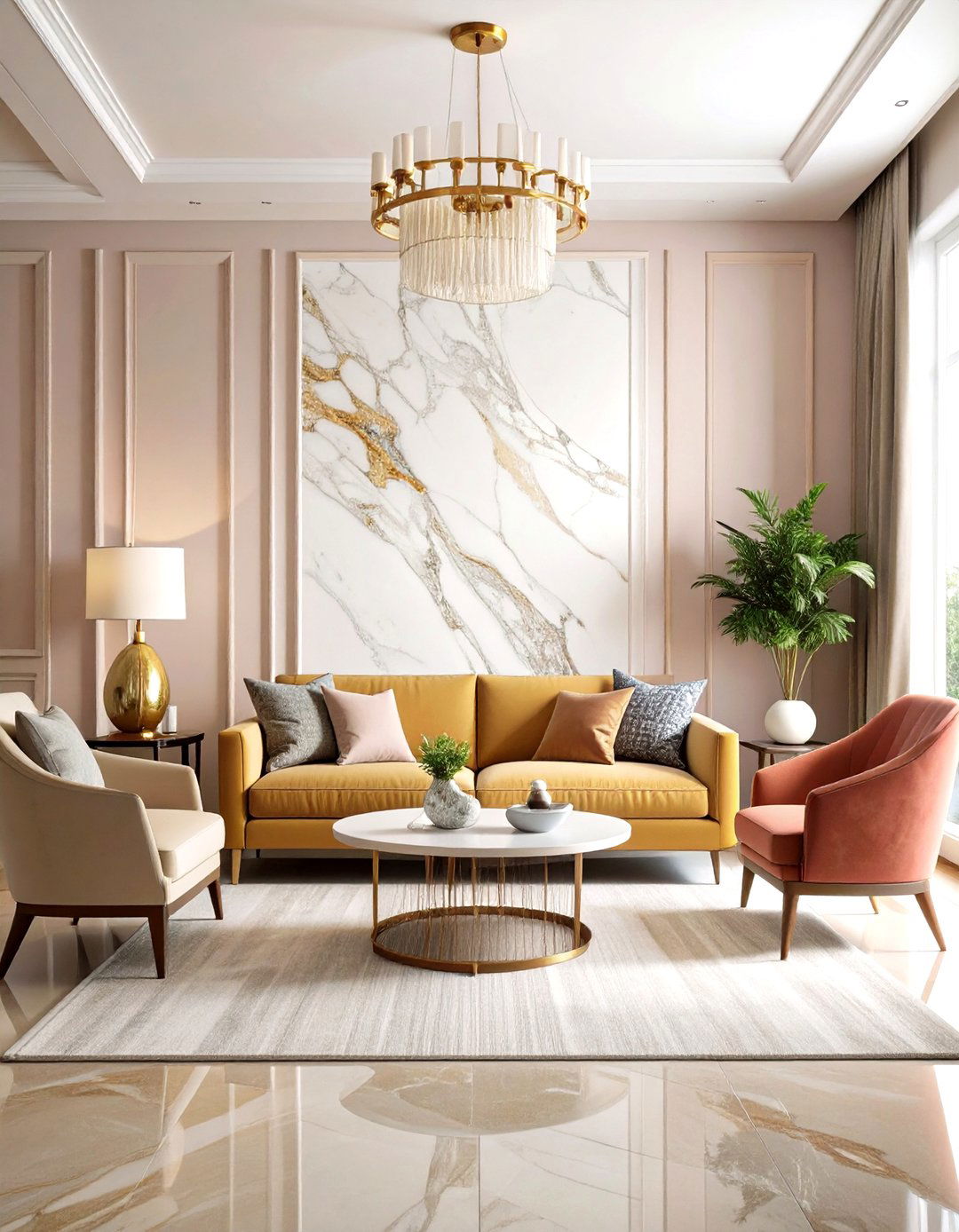
DIY Marble Wall Treatment transforms flat surfaces into luxurious marble-inspired canvases by layering diverse paint hues in a faux finishing technique that utilizes readily available tools and minimal expertise to achieve striking, naturalistic depth on any interior wall. Homeowners begin by applying a uniform base coat and then marking diagonal streaks in contrasting shades, clasping a wool pad primed with varied pigments to gently stipple and blend areas for subtle veining effects that mimic real stone patterns. To enhance authenticity, a feather dipped in a diluted white paint mixture is softly drawn across the blended surfaces, creating fine, organic lines that culminate in a high-end marble aesthetic at a fraction of the cost of genuine stone installations.
2. Dramatic Bedroom Focal Wall

A single, deeply saturated bedroom wall instantly commands attention by enveloping the space in a bold backdrop that highlights architectural features or anchors the bed as the room’s focal point, requiring only precise edging and a single paint can for maximum impact. By painting the entire accent wall—including any trim, niches, or built-in features—in one cohesive color, this method minimizes the need for additional decor while infusing personality and depth into bedrooms of any style. For serene retreats, designers advise opting for mushroom tones like Farrow & Ball’s Purbeck Stone or muted charcoal shades that balance moody elegance with calming warmth for restful sleep environments.
3. Checkered Mudroom Wall

The checkered mudroom wall imparts classic cottage charm by showcasing a grid of alternating hues that catch the eye and add timeless character to utilitarian entry spaces, seamlessly blending style with function in high-traffic areas. Crafters use painter’s tape to map out evenly spaced horizontal and vertical lines, then apply two contrasting paints in the exposed squares, ensuring crisp geometry and a polished checkerboard effect once the tape is removed. This visual pattern not only enlivens mudrooms or hallways, but also cleverly camouflages scuffs and minor wear, making it both a decorative focal point and a practical solution for busy households.
4. Two-Tone Painted Wall

The two-tone painted wall creates architectural interest by dividing the wall into contrasting color blocks—often separated by a horizontal tape line—allowing for dramatic interplay between light and dark or complementary tones. Achieving this effect involves leveling a precise dividing line with painter’s tape and a spirit level, then filling the selected sections with your chosen hues to frame the space without the need for added molding or trim work. Furniture designer Annie Sloan extols this dramatic color blocking as a bold artistic statement that breathes life into simple interiors, encouraging painters to experiment with unexpected palette combinations for custom flair.
5. Paint Woodwork Details

Painting woodwork details, such as window casings, chair rails, and moldings in a contrasting color, uplifts the entire room by accentuating architectural elements that would otherwise blend into the background, adding both depth and sophistication to any space. Home decorators often choose earthy, leafy greens or deep blues against neutral wall hues to evoke cozy, grounded atmospheres, transforming simple trim into a design feature rather than an afterthought. This subtle yet impactful approach requires only minor additional paint and basic tools, offering an accessible DIY upgrade that can be completed in a single afternoon for professional-looking results.
6. Painted Arch Ideas
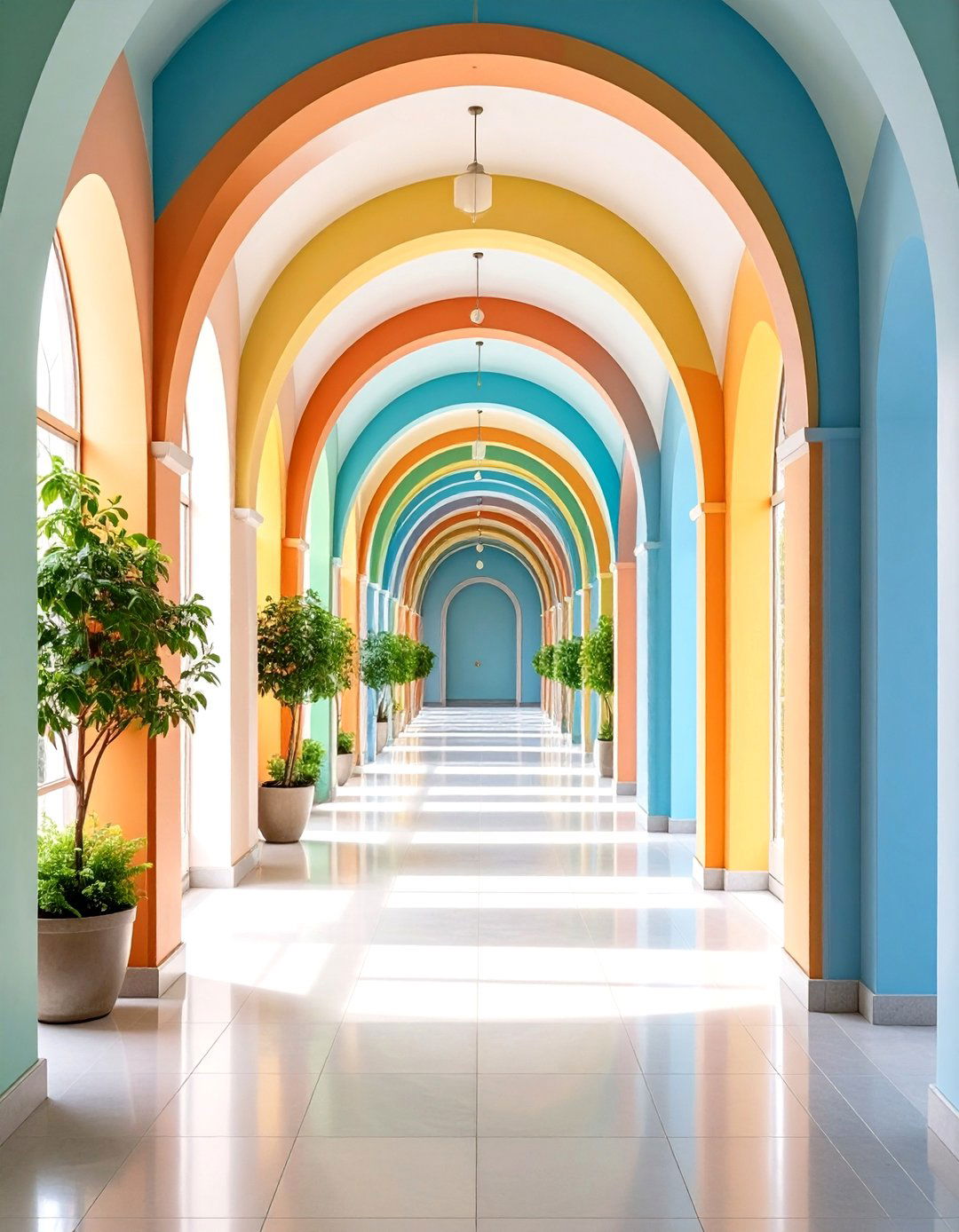
Integrating painted arch designs onto flat walls introduces architectural charm and a sense of depth without structural renovations, using simple curves or repeated arch motifs rendered in complementary paint tones for eye-catching wall treatments. Painters trace semicircular forms with a pencil or string guide before outlining the shape with tape and filling the interior with a contrasting color, ensuring crisp lines and balanced proportions in every installation. Designers recommend pairing these arches with neutral or pastel backgrounds to maintain focus on the refined shape and curvature, blending modern minimalism with classic detailing in living rooms, hallways, or dining areas.
7. Sunset-Inspired Wall Painting Idea
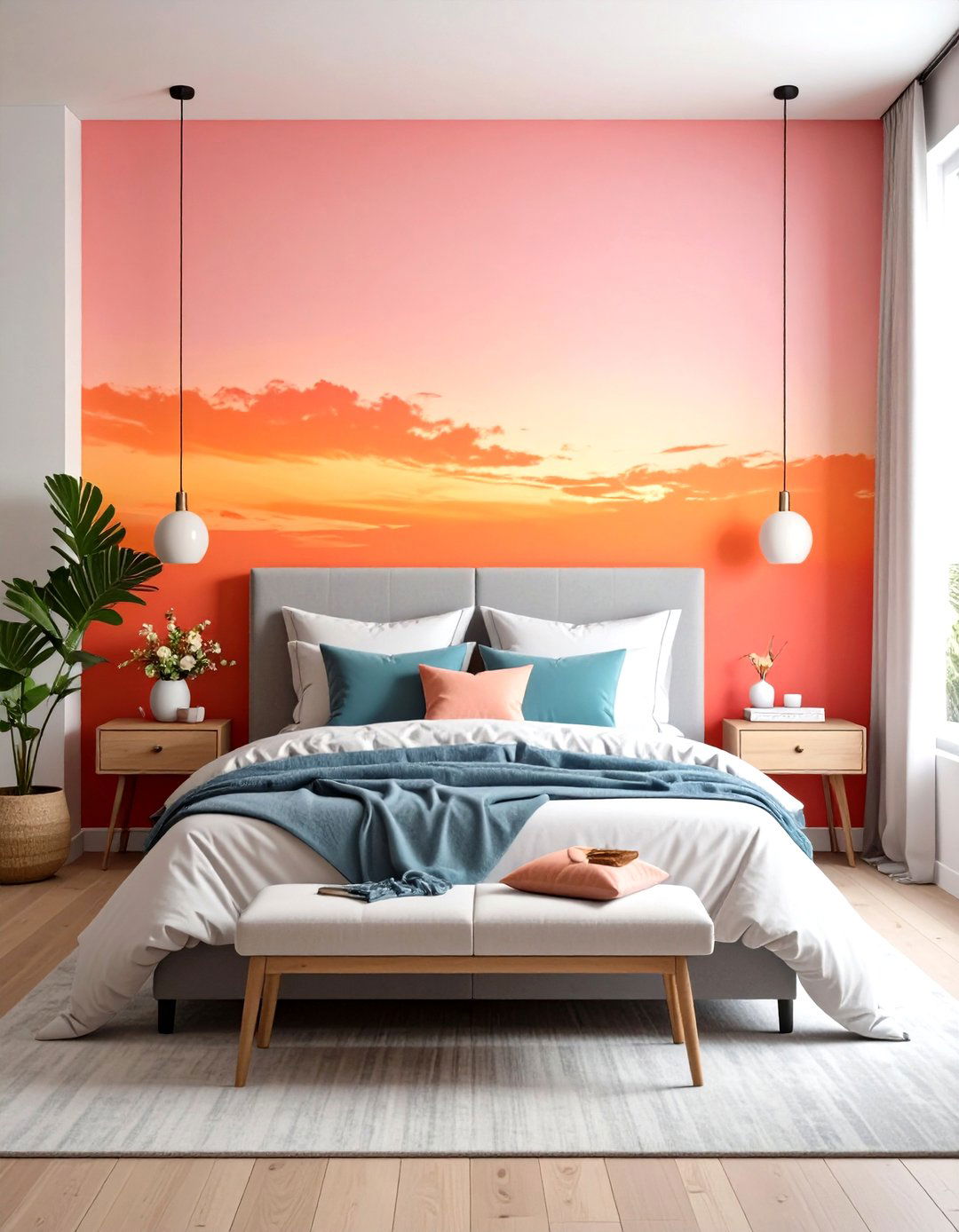
The sunset-inspired wall features a horizontal gradient of sunset hues—such as coral, orange, pink, and soft purple—layered from darkest at the base to lightest at the top, evoking the serene transition of dusk on any interior wall. To achieve seamless blending, painters divide the wall into horizontal bands, apply each shade while the paint remains wet, and then use a brush or sponge to feather the boundaries, creating a fluid ombre that mimics a glowing sky. This technique fosters a warm, inviting atmosphere ideal for bedrooms, home offices, or living spaces, allowing creative customization through varied color intensity and band height according to room dimensions.
8. Buffalo Check Wall Painting Idea
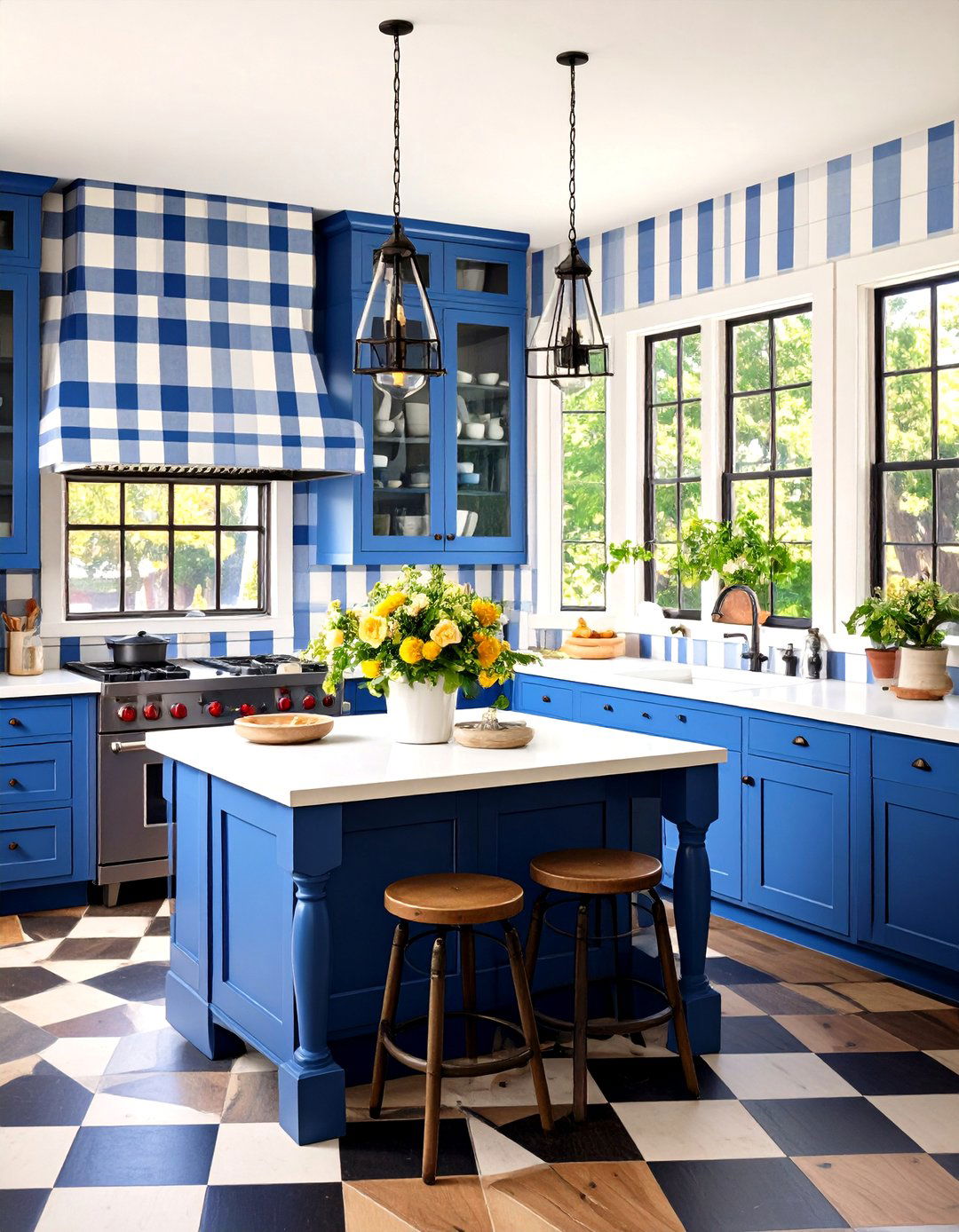
Buffalo check walls combine bold, oversized plaid patterns with deep and light paint tones—often in classic black and white or contemporary navy and cream—to craft rustic-chic focal points in kitchens, bathrooms, or living rooms. Artists mark out broad vertical and horizontal tape lines spaced evenly across the surface, fill in alternating blocks with the chosen colors, and remove the tape once dry to reveal a crisp, farmhouse-inspired pattern. This design injects farmhouse charm into modern interiors, harmonizing with wood accents and vintage textiles to balance tradition and trend in open-concept living areas or cozy nooks.
9. Color-Drenched Space
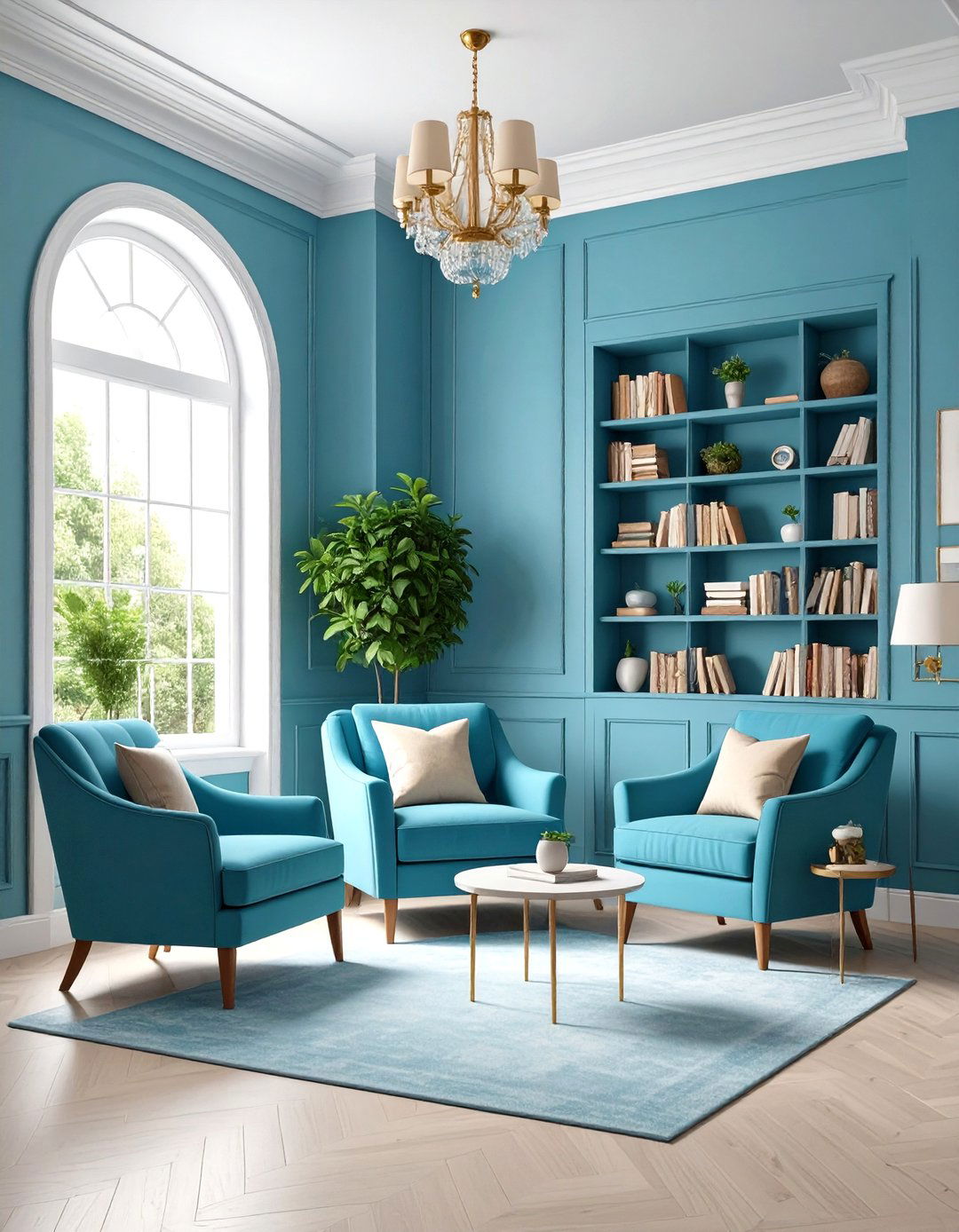
Color drenching envelops every visible surface—walls, trim, moldings, and even ceilings—in a single bold shade to create an immersive, cocoon-like environment that feels cohesive and dramatically stylized. Achieving this look requires careful surface prep and multiple coats of high-quality paint in a hue that complements the room’s lighting and furnishings, ensuring uniform coverage without streaks or roller marks. This technique works especially well in living areas or reading corners where the enveloping color promotes intimacy and sanctuary-like comfort, ideal for those seeking maximalist design statements.
10. Checkerboard Accent Wall
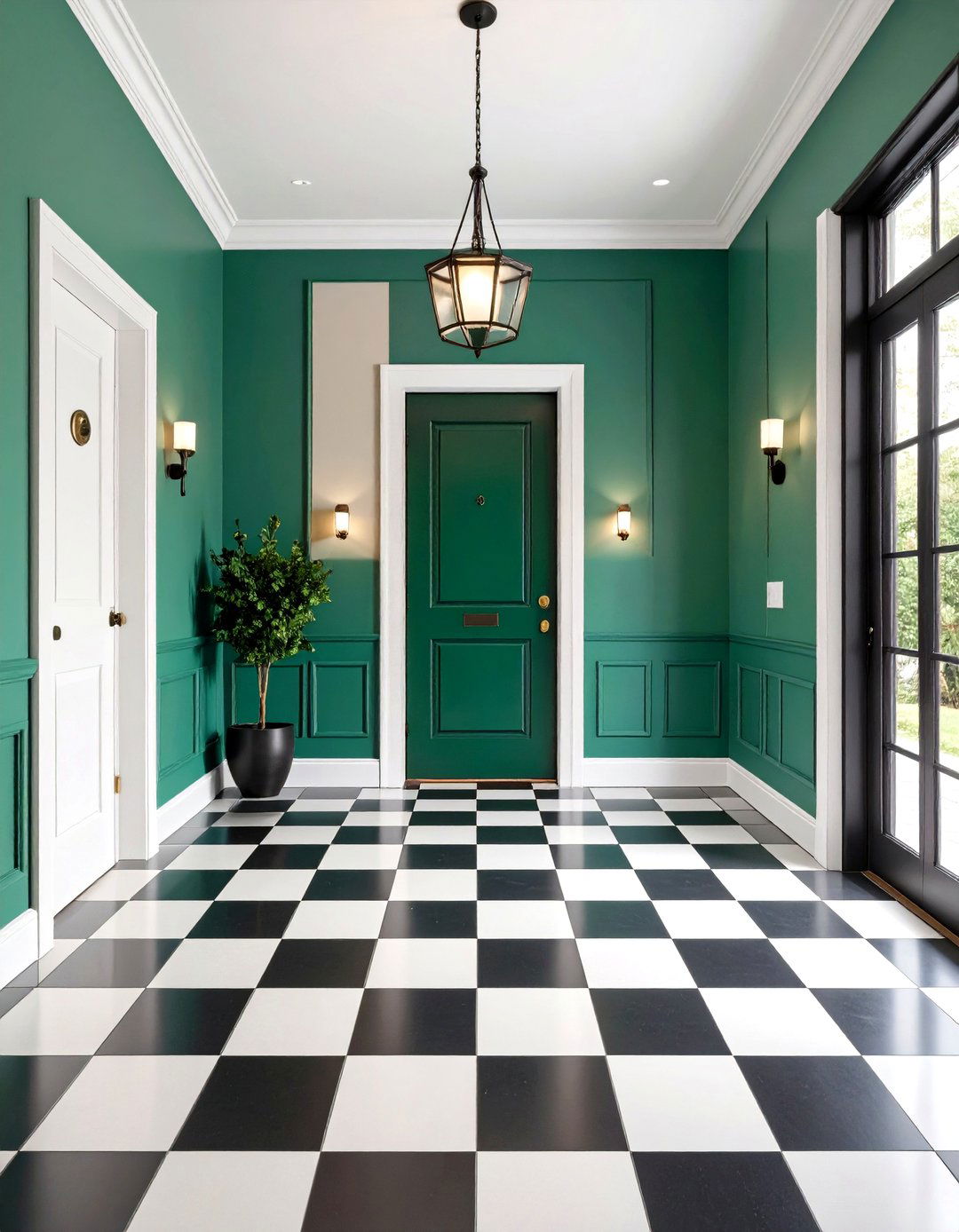
The checkerboard accent wall presents a refined alternative to the full checkered mudroom design, using two contrasting colors in precise squares to form a striking graphic pattern that animates entryways or feature walls. Painters first prime the entire area in the lighter shade, then apply painter’s tape to delineate equally sized squares, filling alternate segments with the darker tone for a balanced arrangement. Upon tape removal, the resulting clean lines yield a bold, engaging statement that pairs beautifully with minimalist furnishings and monochrome accessories.
11. Play Up the Ceiling
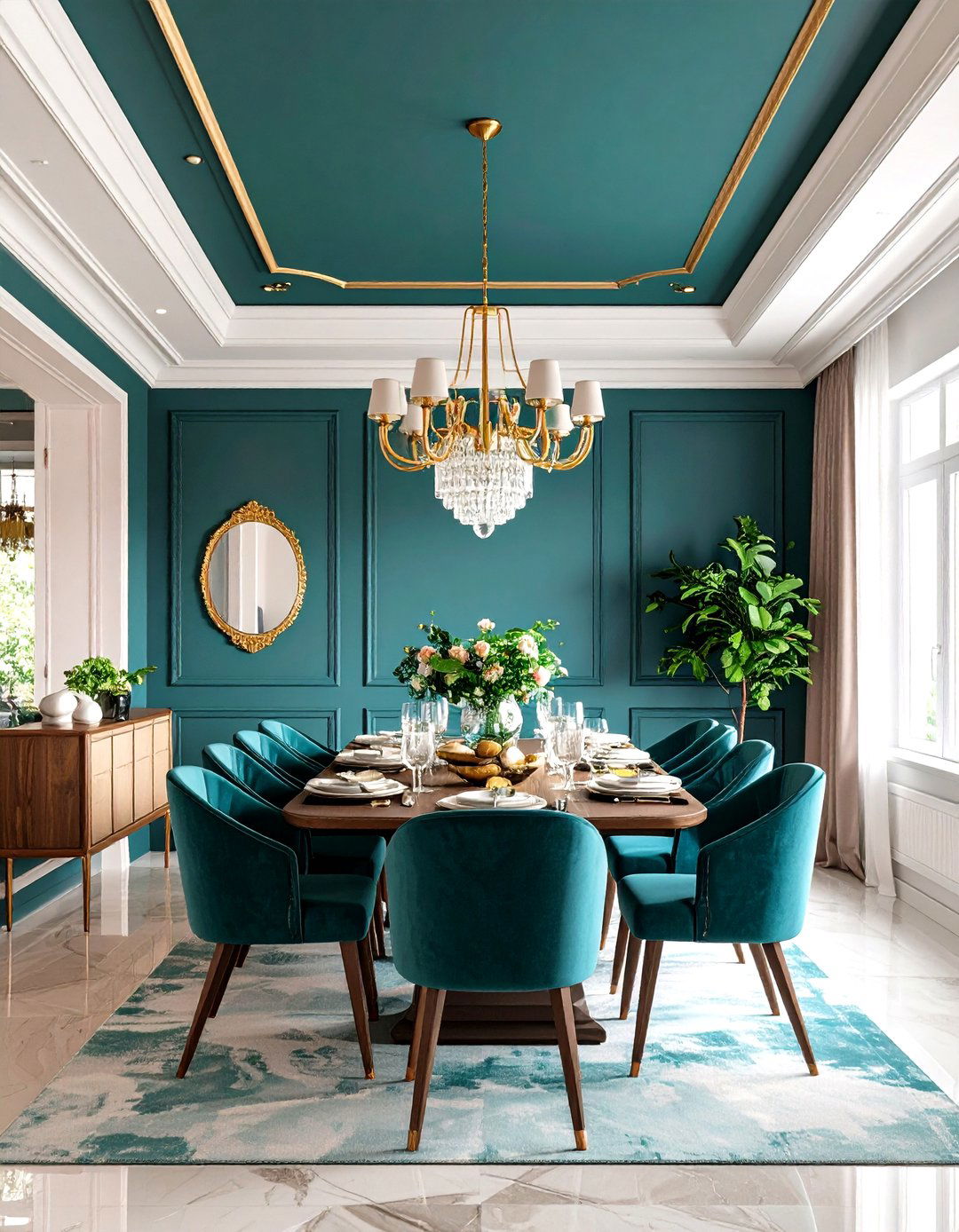
Painting the ceiling in a contrasting or complementary hue transforms an often-overlooked surface into a design highlight, drawing the eye upward and accentuating architectural features such as beams or vaulted roofs. Rich navy, sage green, or blush pink ceilings contrast with neutral walls to lend character and depth, while satin or semi-gloss finishes reflect light, enhancing spatial perception. To ensure a seamless transition, professional painters tape off the wall-ceiling junction and apply even coats with a roller, paying special attention to cornices and coves to avoid drips.
12. Tone-on-Tone Wall Painting
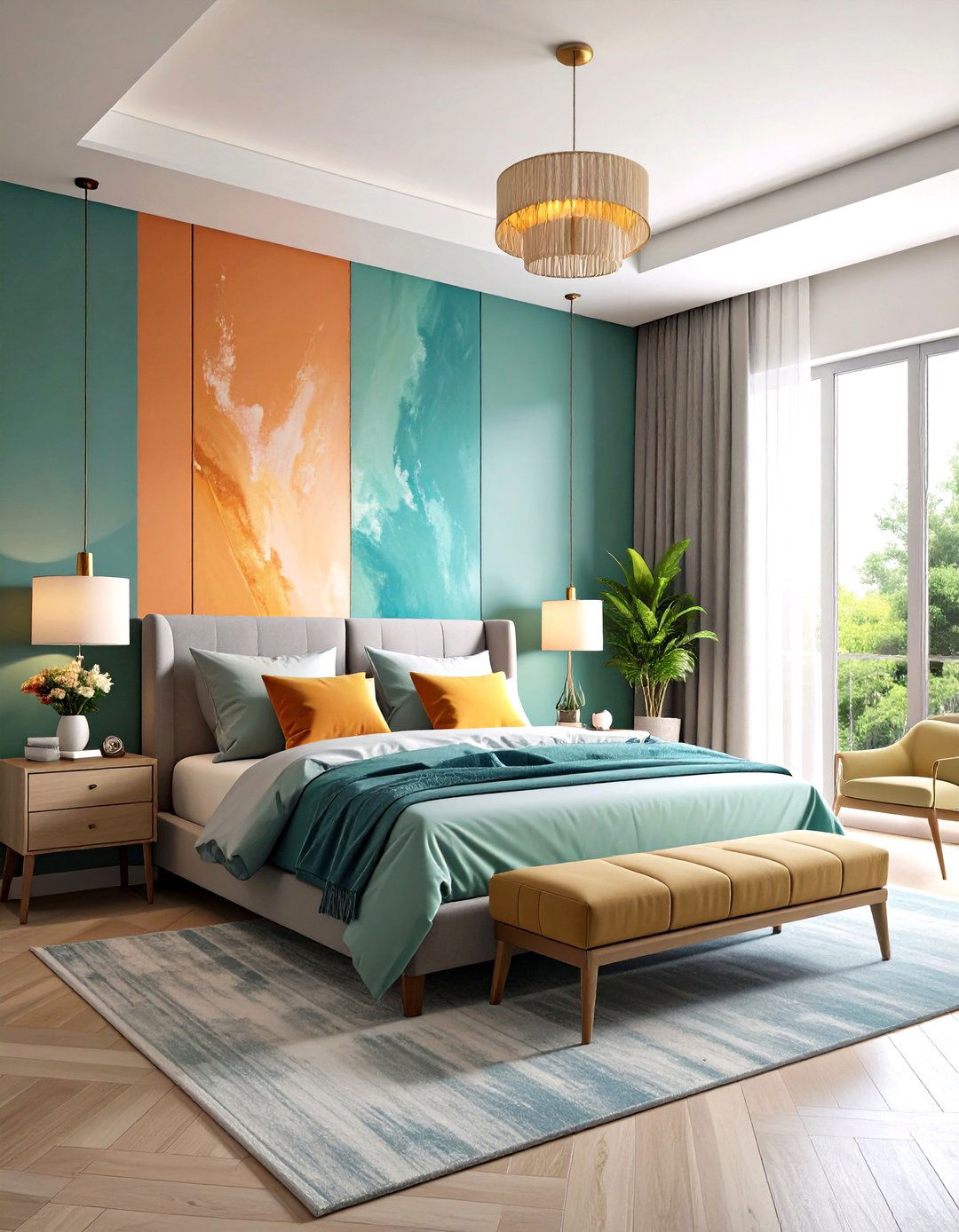
Tone-on-tone walls are achieved by pairing two shades from the same color family—a lighter base and a darker accent—for a sophisticated, layered look that adds subtle depth without overwhelming the space. Designers suggest testing swatches on different walls to observe how natural and artificial light affect each hue’s undertones before committing to the palette. This nuanced effect works particularly well in bedrooms, studies, or living rooms, creating a serene backdrop that feels richer than a single-tone application while maintaining understated elegance.
13. Abstract Masterpiece
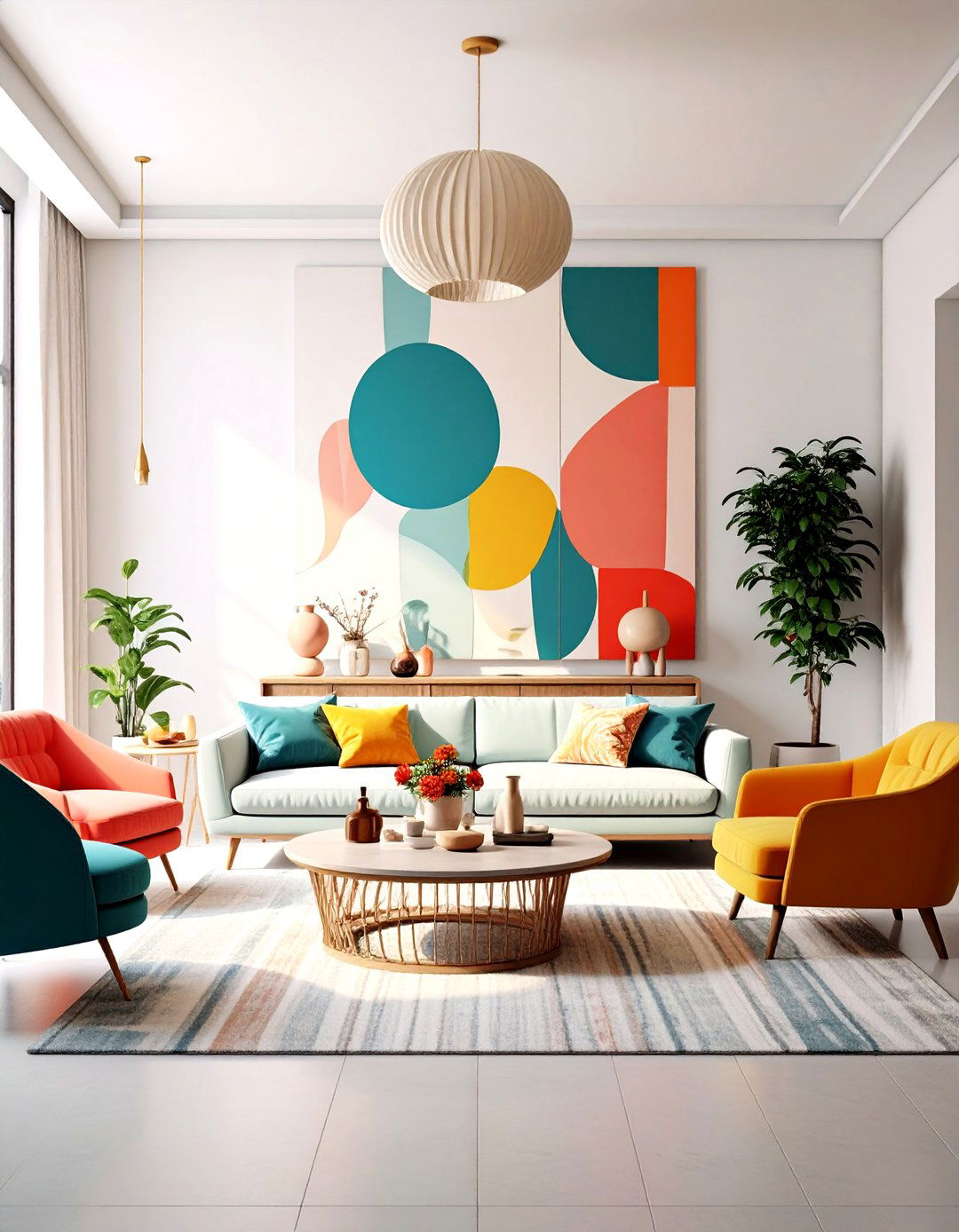
Creating an abstract wall painting involves sectioning off freeform geometric shapes with painter’s tape, then filling each segment with a selected color palette to produce a unique, gallery-worthy composition. Enthusiasts can experiment with asymmetrical forms, varied angles, and unexpected color juxtapositions to reflect personal taste and architectural context, resulting in custom artwork integrated directly onto the walls. This approach elevates interior design by merging art and architecture, allowing walls to function as canvases for self-expression in living rooms, studios, or creative workspaces.
14. Easy Patterned Wall
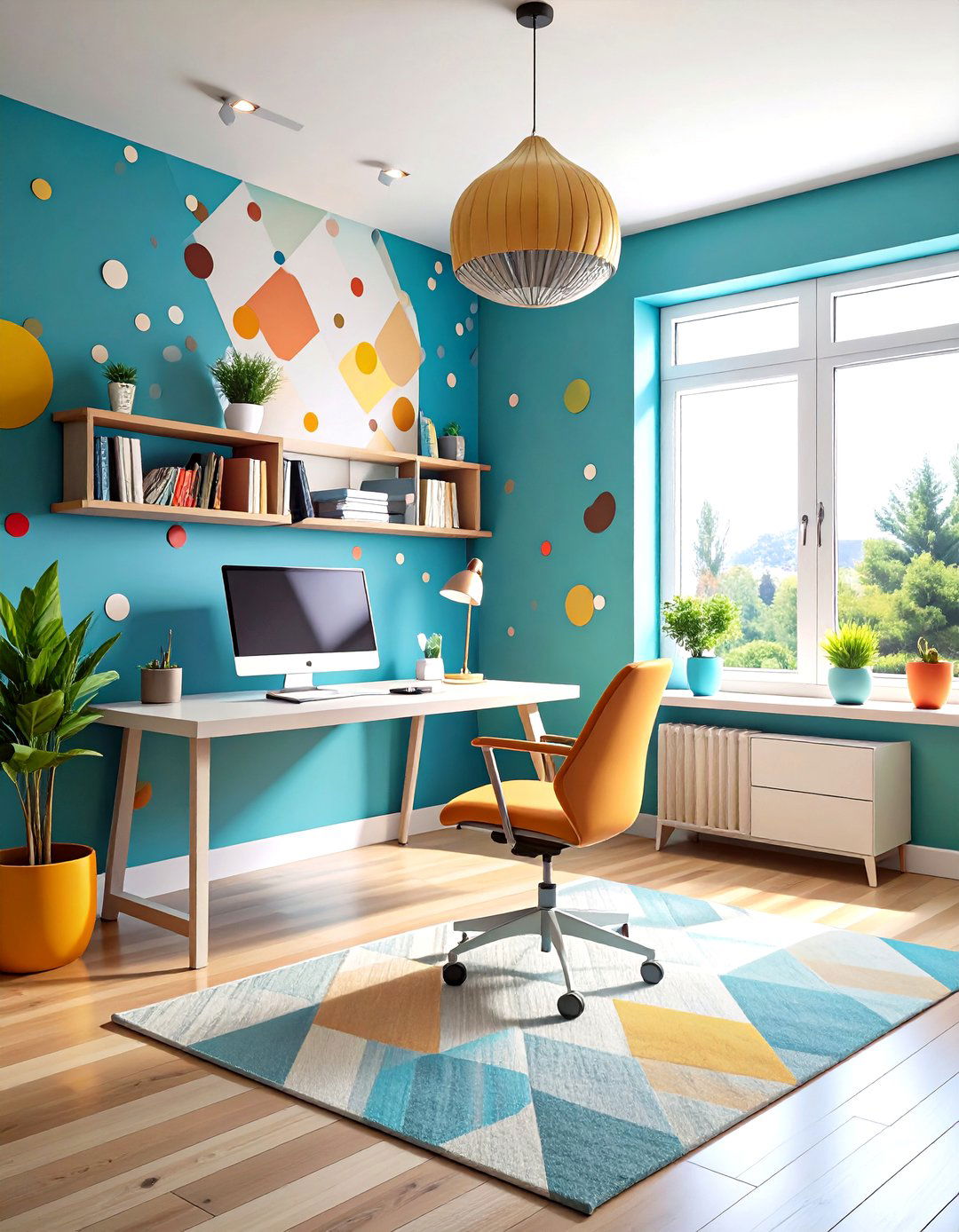
Freehand patterned walls invite playful motifs—such as polka dots, dashes, or zigzags—applied with an angled brush for spontaneous, imperfect lines that exude charm and handcrafted character. Painters lightly sketch or trace small patterns before filling them in with a steady hand, ensuring variations in brushstroke thickness enhance the organic feel of the design. This low-commitment technique suits renters and DIY novices, transforming drab walls into dynamic focal points with minimal tools and time investment.
15. Add a Landscape
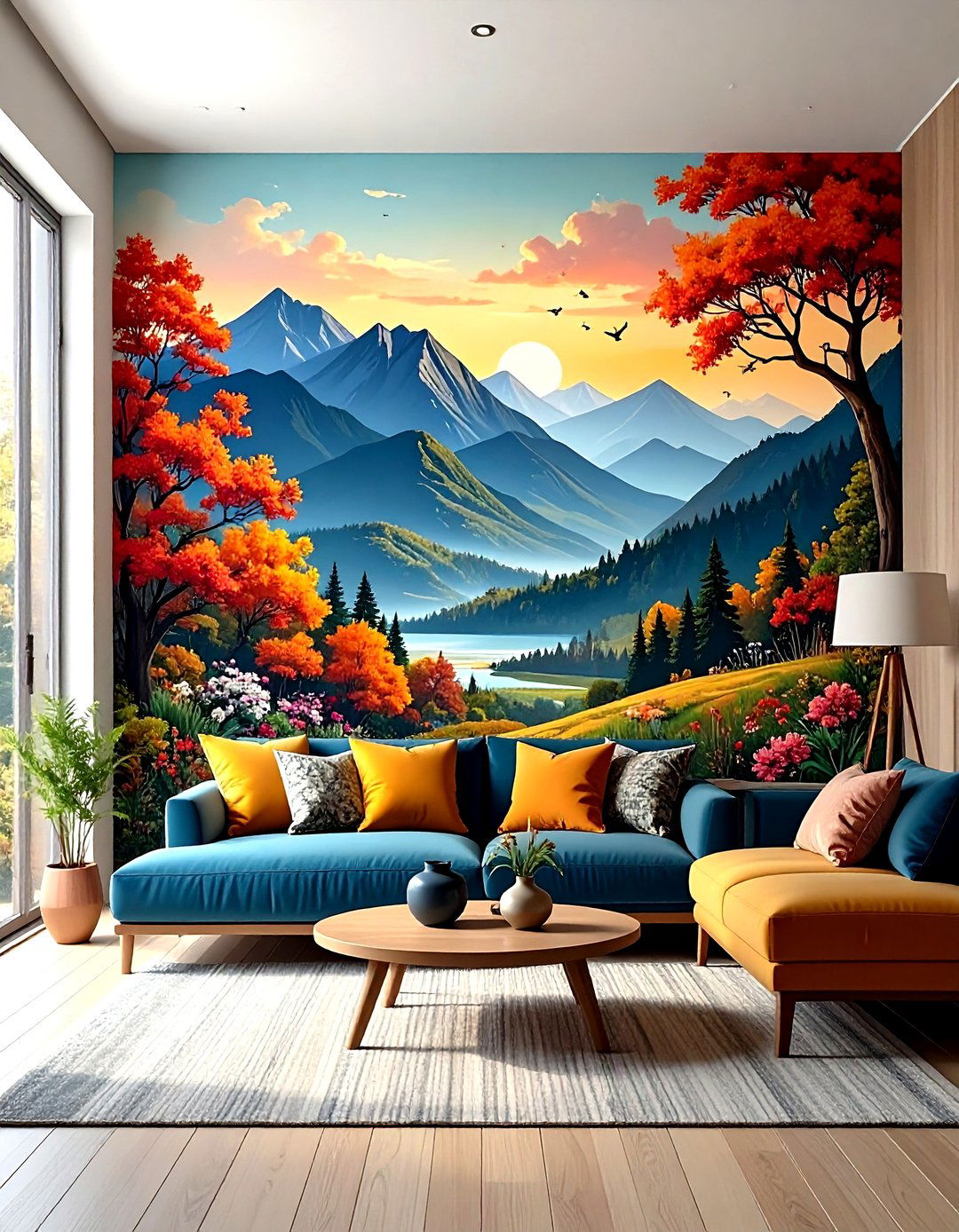
Painting a landscape mural—a mountain range, forest scene, or coastal vista—personalizes interiors with immersive vistas that bring the outdoors in and enrich rooms with narrative depth and scenic beauty. While experienced artists may hand-paint complex scenes, beginners can use stencils or projector methods to trace outlines before filling in colors for more achievable results. Landscape murals work wonderfully in living rooms, nurseries, or dining areas, offering tranquil visual anchors that complement minimalist furnishings and natural materials.
16. Contrasting Walls and Trim
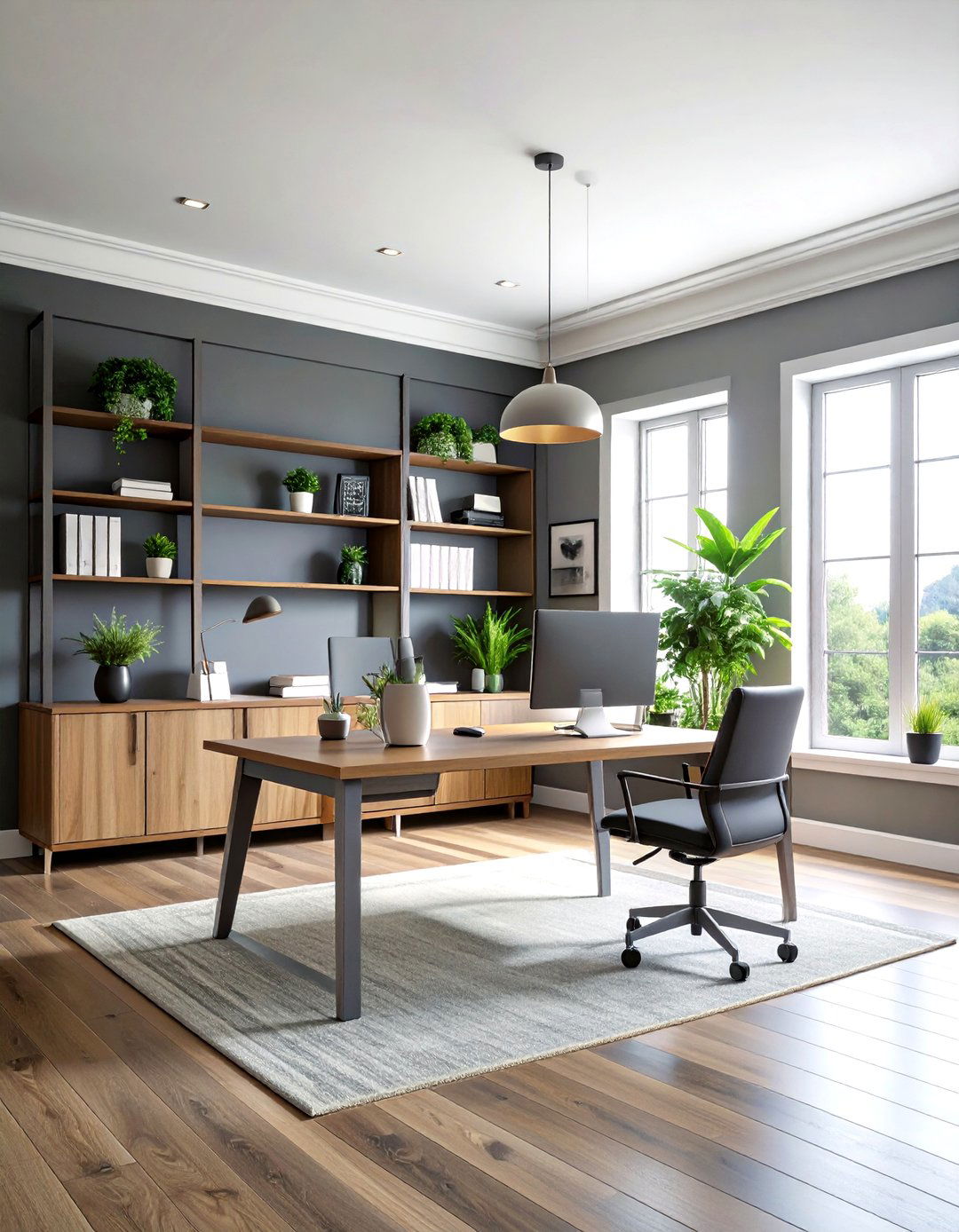
Contrasting walls and trim involve painting walls and adjoining moldings in distinct colors—often pairing crisp neutrals with vivid accents—to underscore room proportions and highlight architectural details. Interior Company frequently features modern designs where sleek grey walls are offset by bright white trims, creating sharp delineation and a polished, contemporary aesthetic. This technique elevates any room—be it living spaces or home offices—by framing windows, doors, and baseboards as intentional design elements rather than functional afterthoughts.
17. Paint a Chalkboard Wall
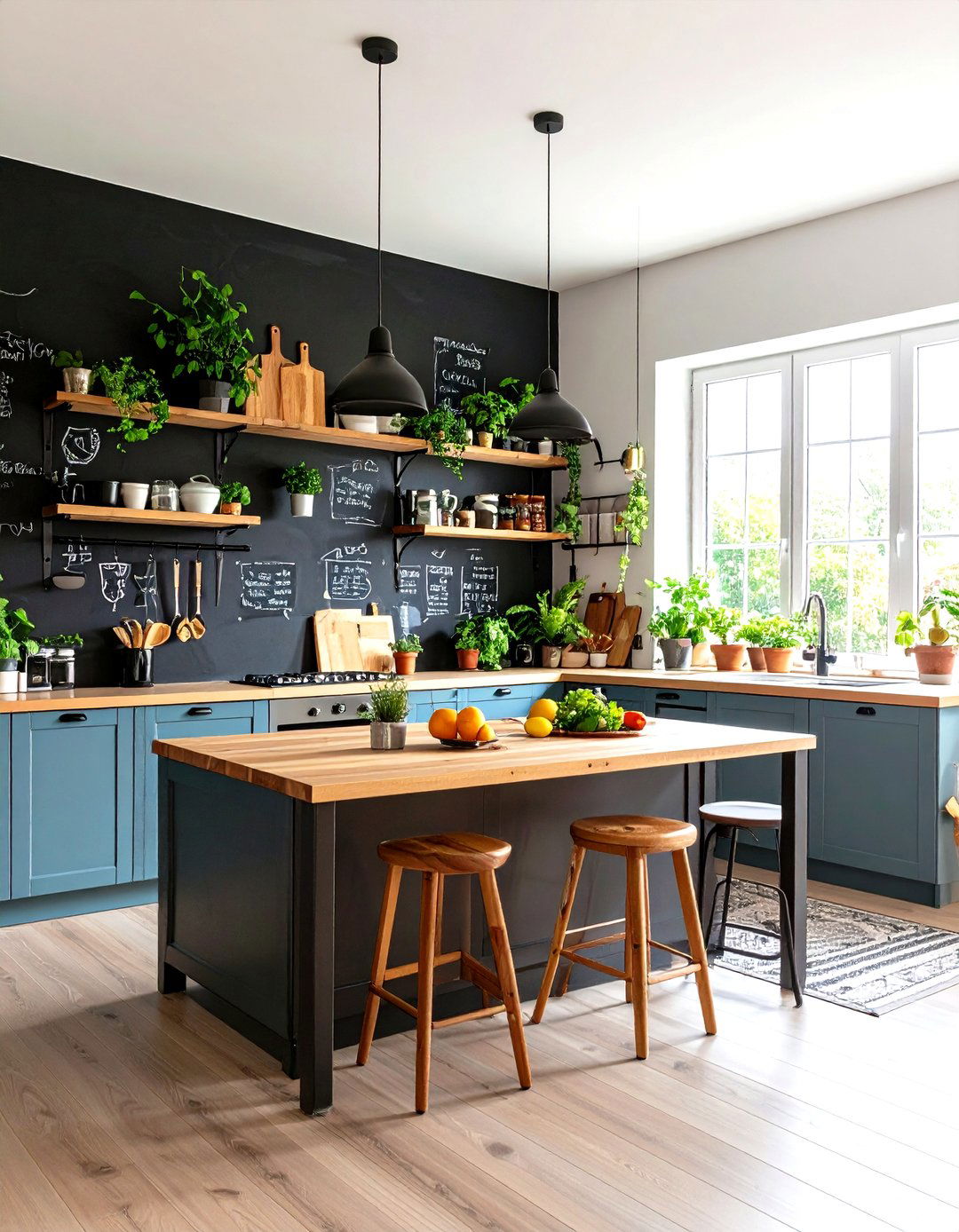
A chalkboard wall transforms any surface into an interactive canvas, perfect for family messages, daily notes, or spontaneous doodles in kitchens, playrooms, or home offices. After priming with a matte black chalkboard paint, homeowners can season the surface with chalk to prevent ghosting, then create custom grids, charts, or artwork on demand. This functional design solution encourages creativity, provides organizational benefits, and refreshes the room’s look as often as daily inspirations arise.
18. Thick Striped Wall
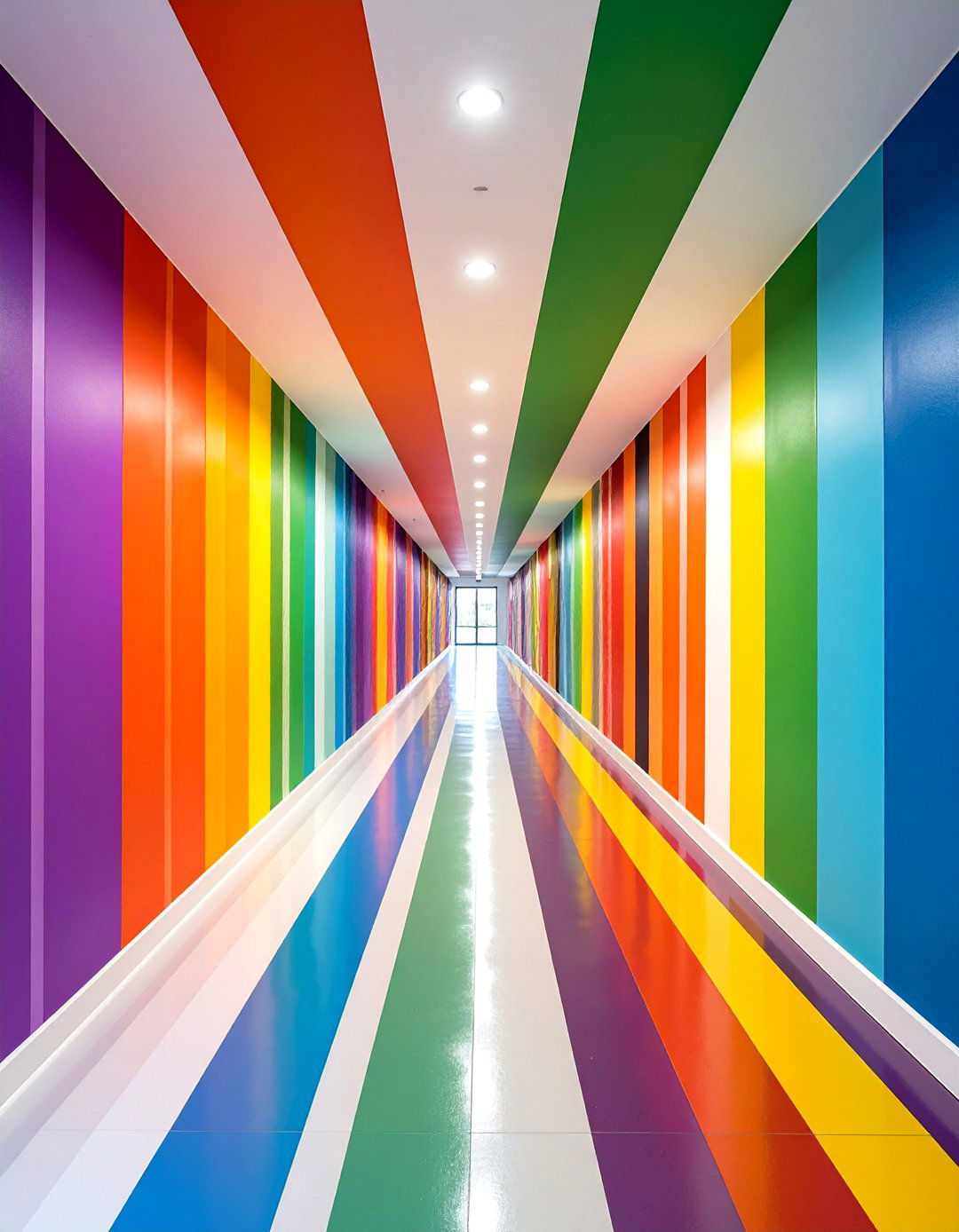
Thick striped walls feature broad vertical or horizontal bands of paint, offering bold graphic interest that elongates, widens, or visually coalesces room proportions based on stripe orientation. To execute, painters mark off wide stripes with tape, prime each band with the base color, then fill alternating stripes with a secondary hue, ensuring even coverage and crisp liner removal once dry. This timeless pattern suits bedrooms, nurseries, and hallways alike, allowing for playful color pairings or sophisticated monochromatic schemes tailored to personal style.
19. Geometric Mountain Design
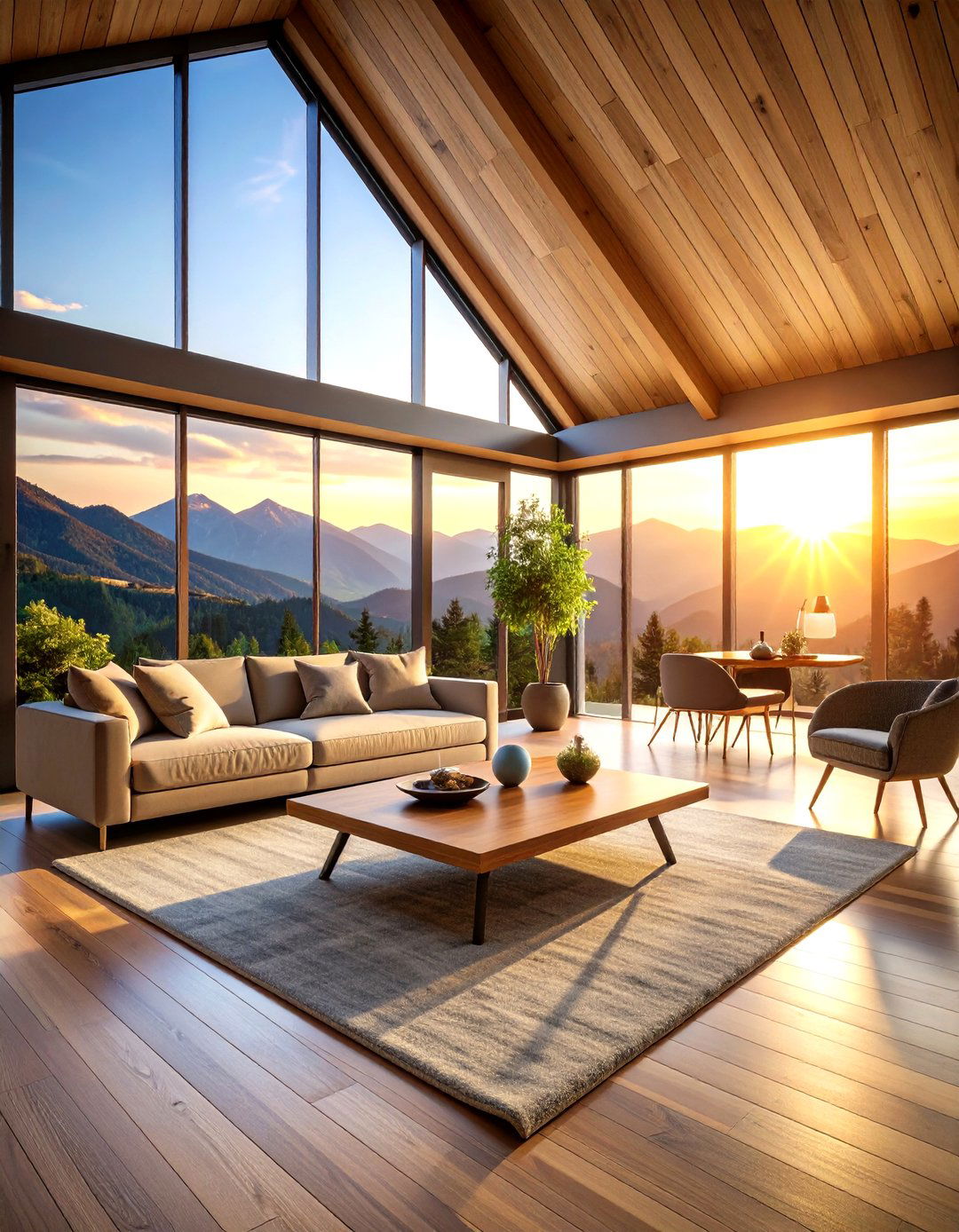
Geometric mountain designs sculpt walls into modern, angular interpretations of mountain peaks using painter’s tape to map triangular shapes in varying sizes and shades. By combining sunset-inspired hues or monochrome gradients, homeowners can render stylized landscapes that inject both energy and serenity into children’s bedrooms, dens, or creative studios. This versatile motif accommodates diverse color palettes and complexity levels, from simple two-tone peaks to multi-hued compositions reminiscent of abstract art.
20. Traditional Mandana Wall Art

Traditional Mandana wall art from Rajasthan integrates symmetrical, hand-drawn motifs—such as peacocks, floral patterns, and geometric shapes—painted in white or pale pigments on vibrant red backgrounds to bless homes and celebrate auspicious occasions. Artists prepare the surface with a mixture of cow dung and clay, then use lime or chalk powders applied via cotton swabs, tufts of hair, or date-stick brushes to render ornate, ceremonial designs around doorways and walls. While traditionally practiced by Meena women for protective and celebratory purposes, Mandana art has gained contemporary appeal as a stunning, culture-rich mural choice that connects interiors to centuries-old Indian decorative traditions.
Conclusion:
These twenty wall painting ideas offer diverse pathways to personalize any room, whether through immersive color drenching, precise geometric patterns, classic faux finishes, or heritage-inspired murals. By embracing techniques like faux marble, dramatic accent walls, tone-on-tone pairings, and Mandana motifs, homeowners can transform bland walls into dynamic expressions of style and personality. Each project requires minimal materials and can be tailored in complexity to suit novice DIYers and seasoned artists alike. With proper preparation, quality paint, and a steady hand, any of these concepts can elevate interiors, fostering inviting, memorable environments that reflect individual creativity and aesthetic goals.


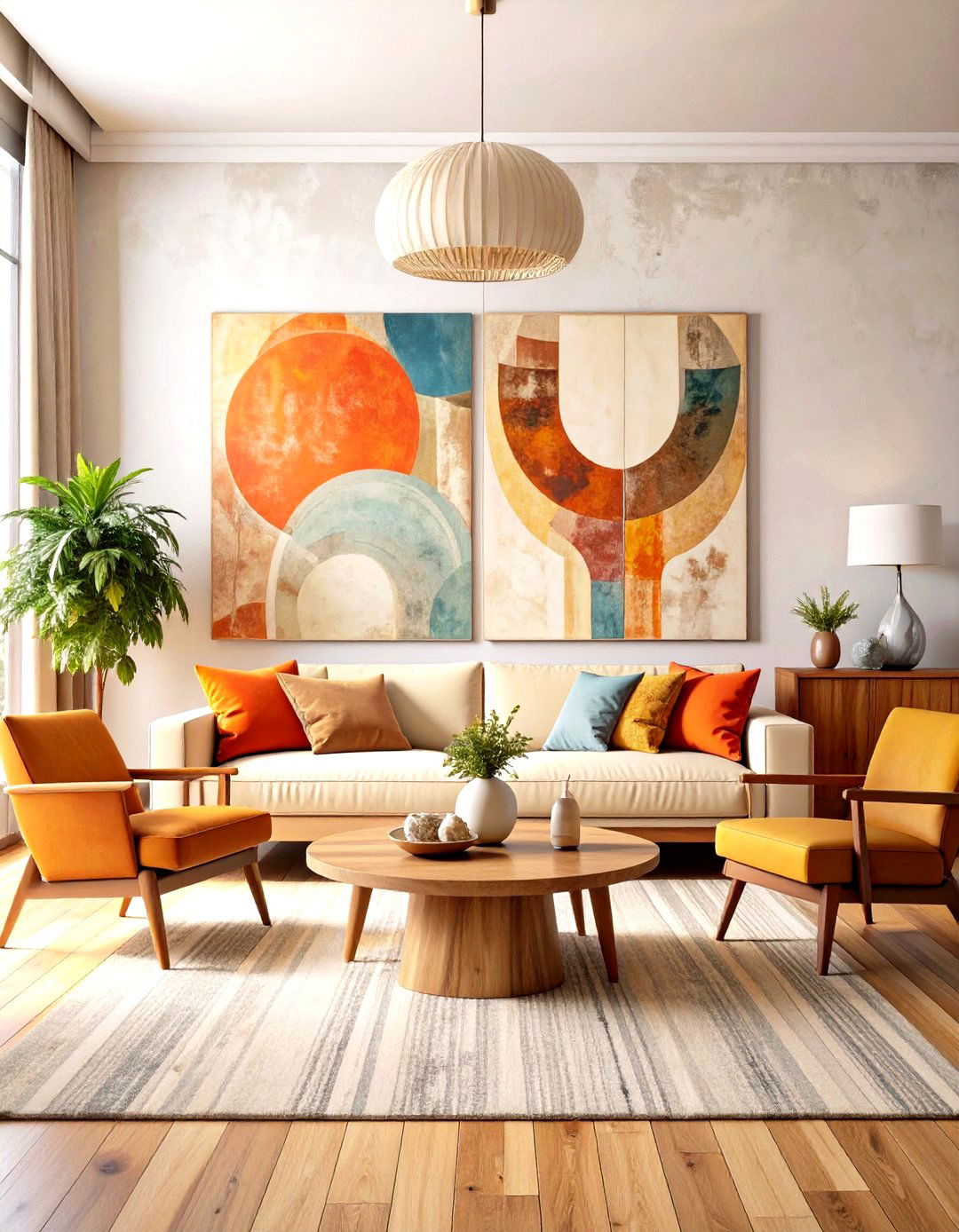
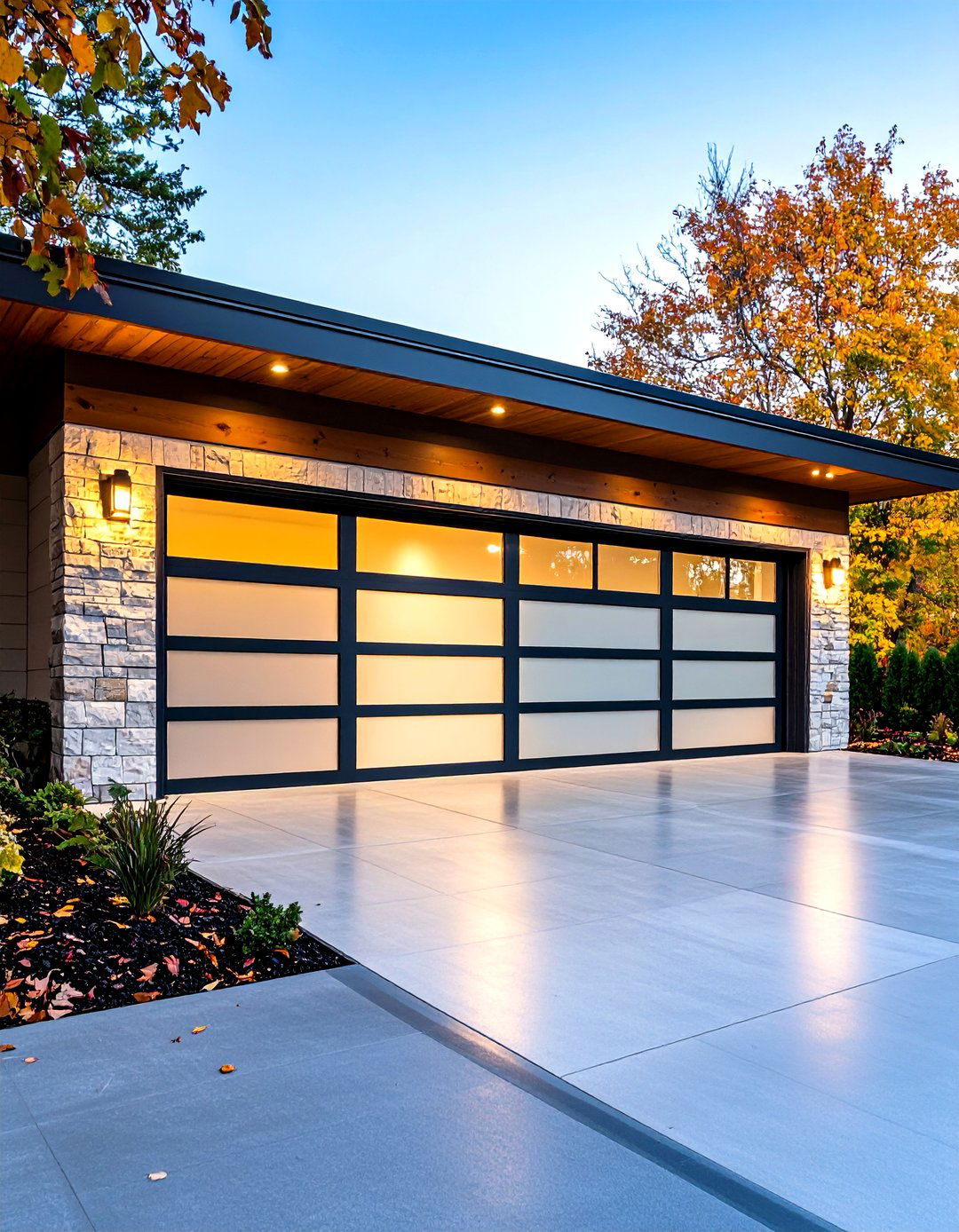
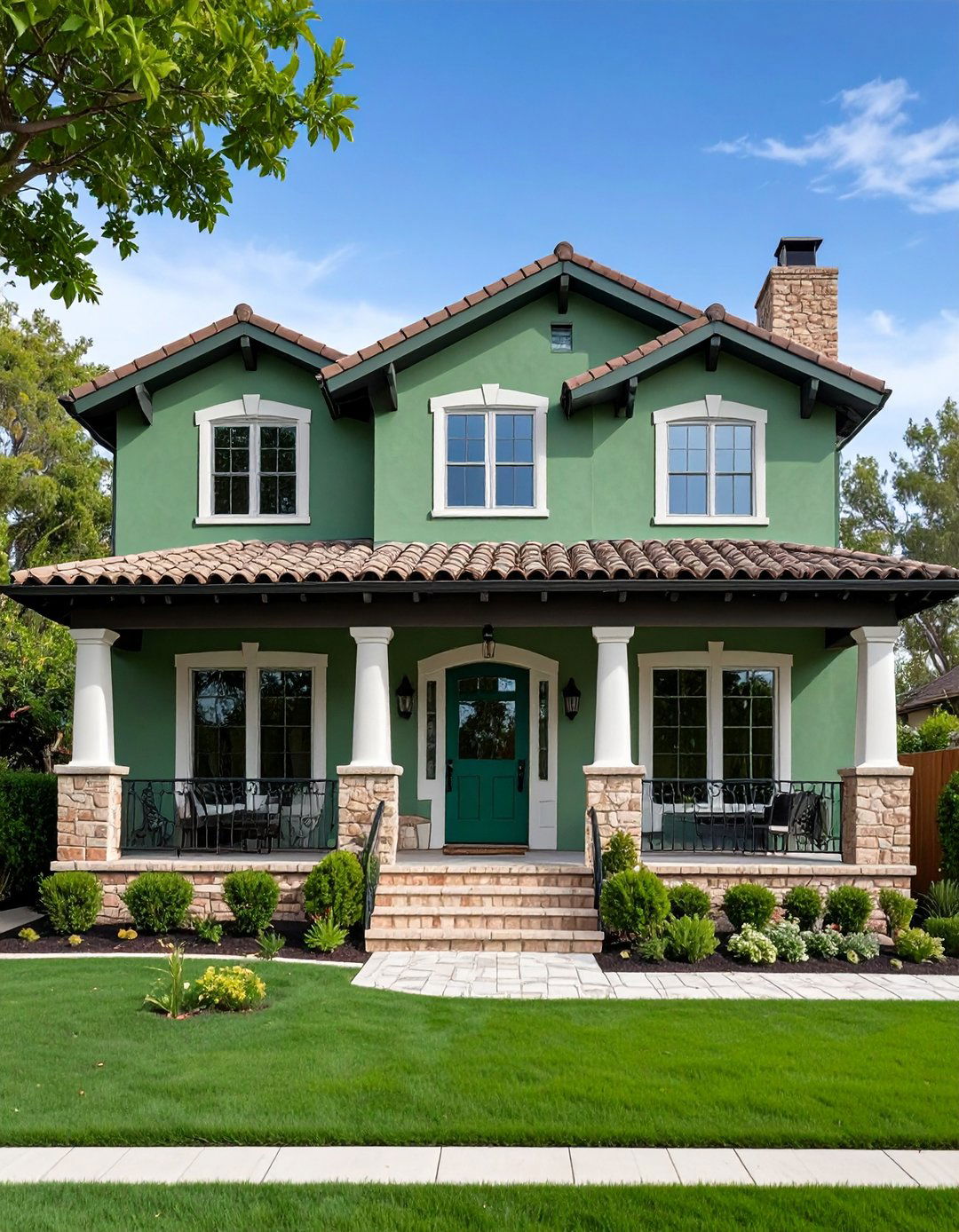
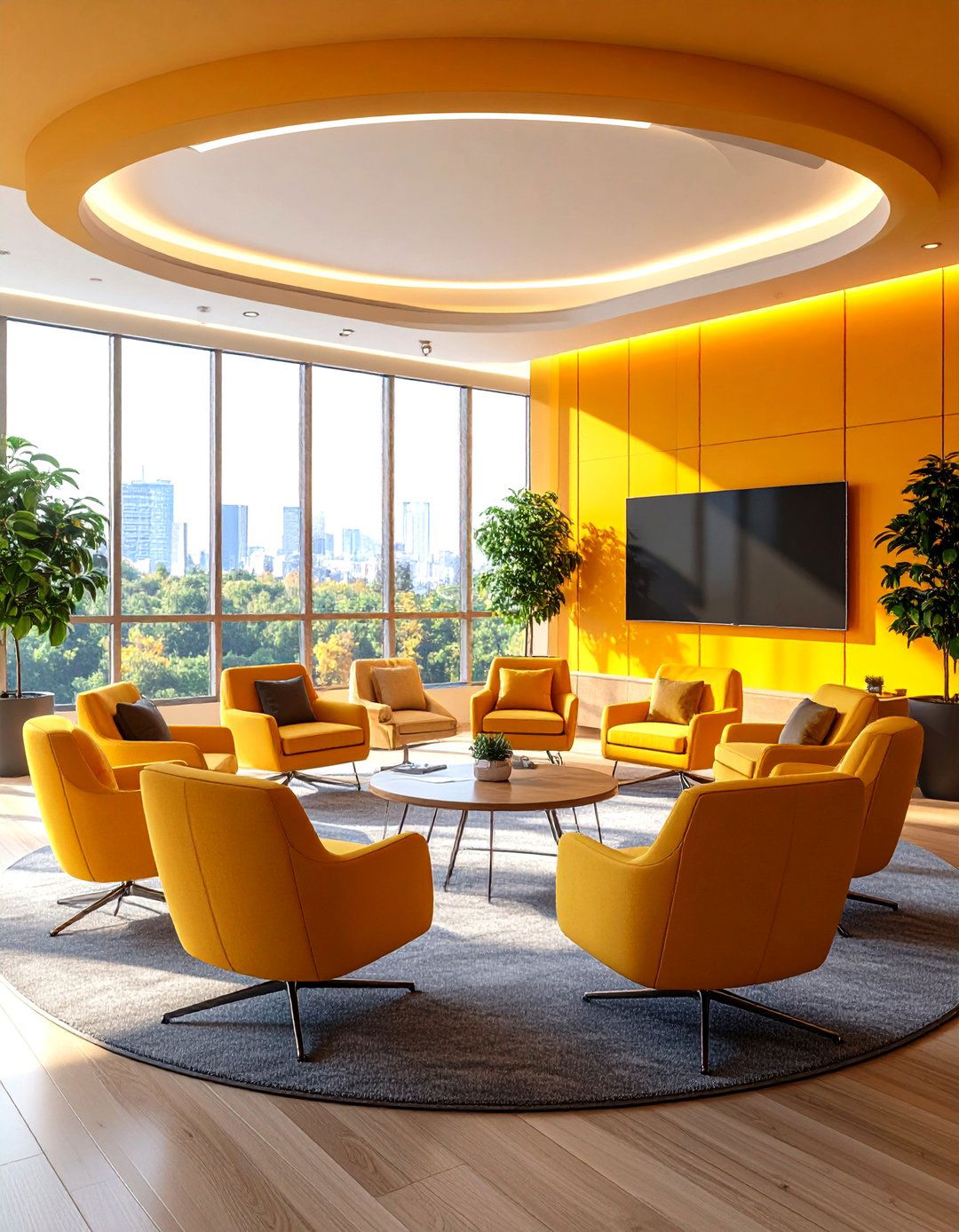
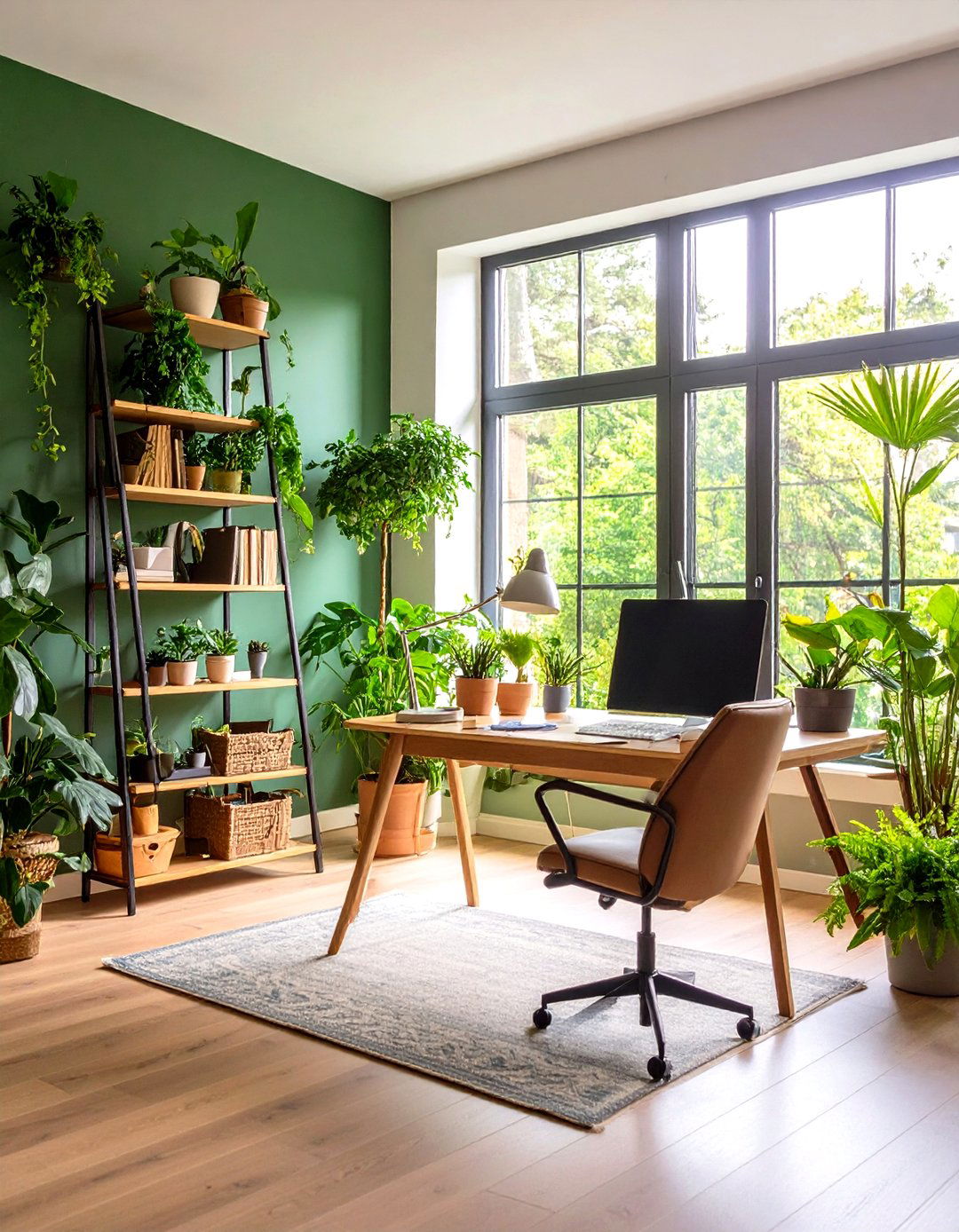
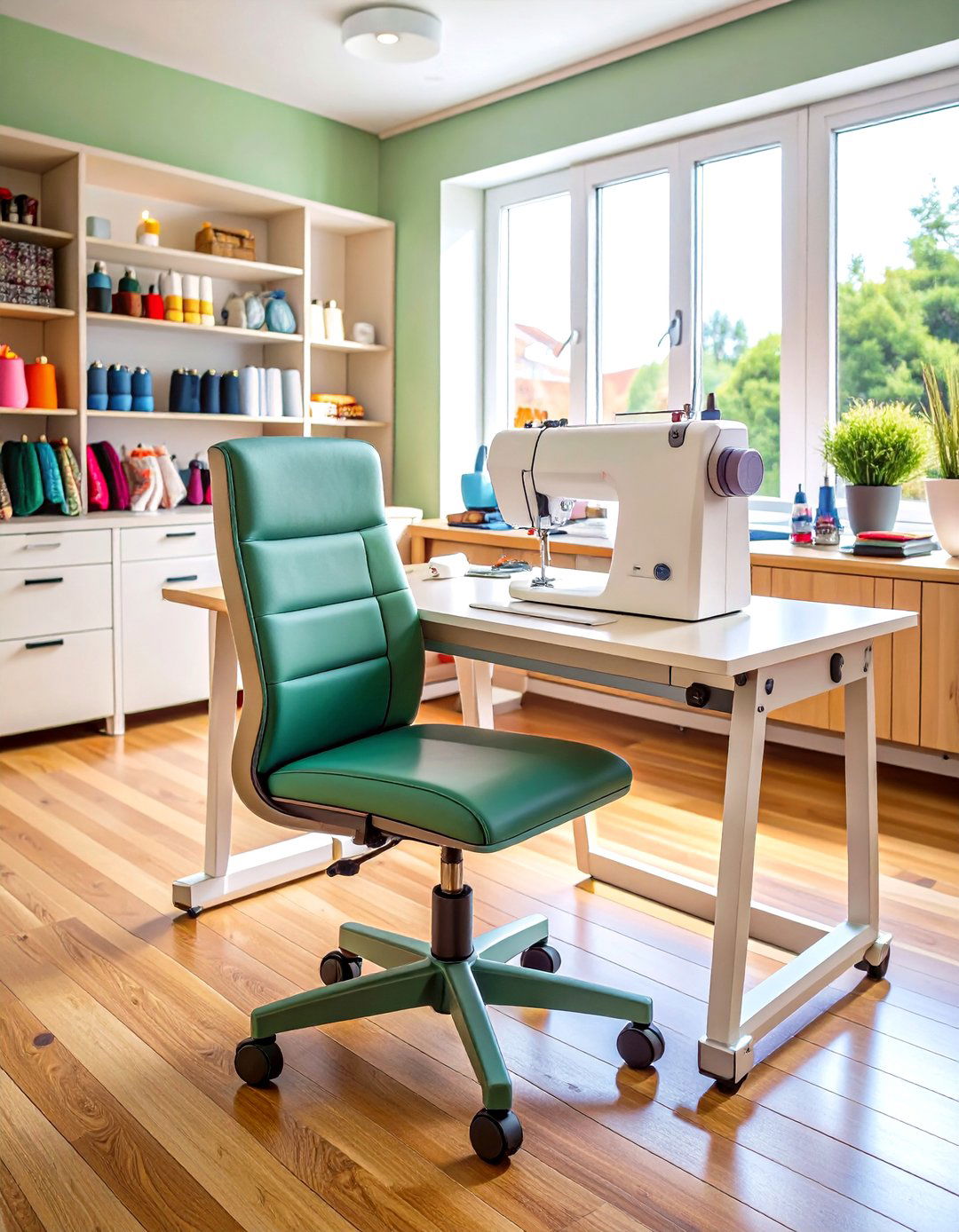

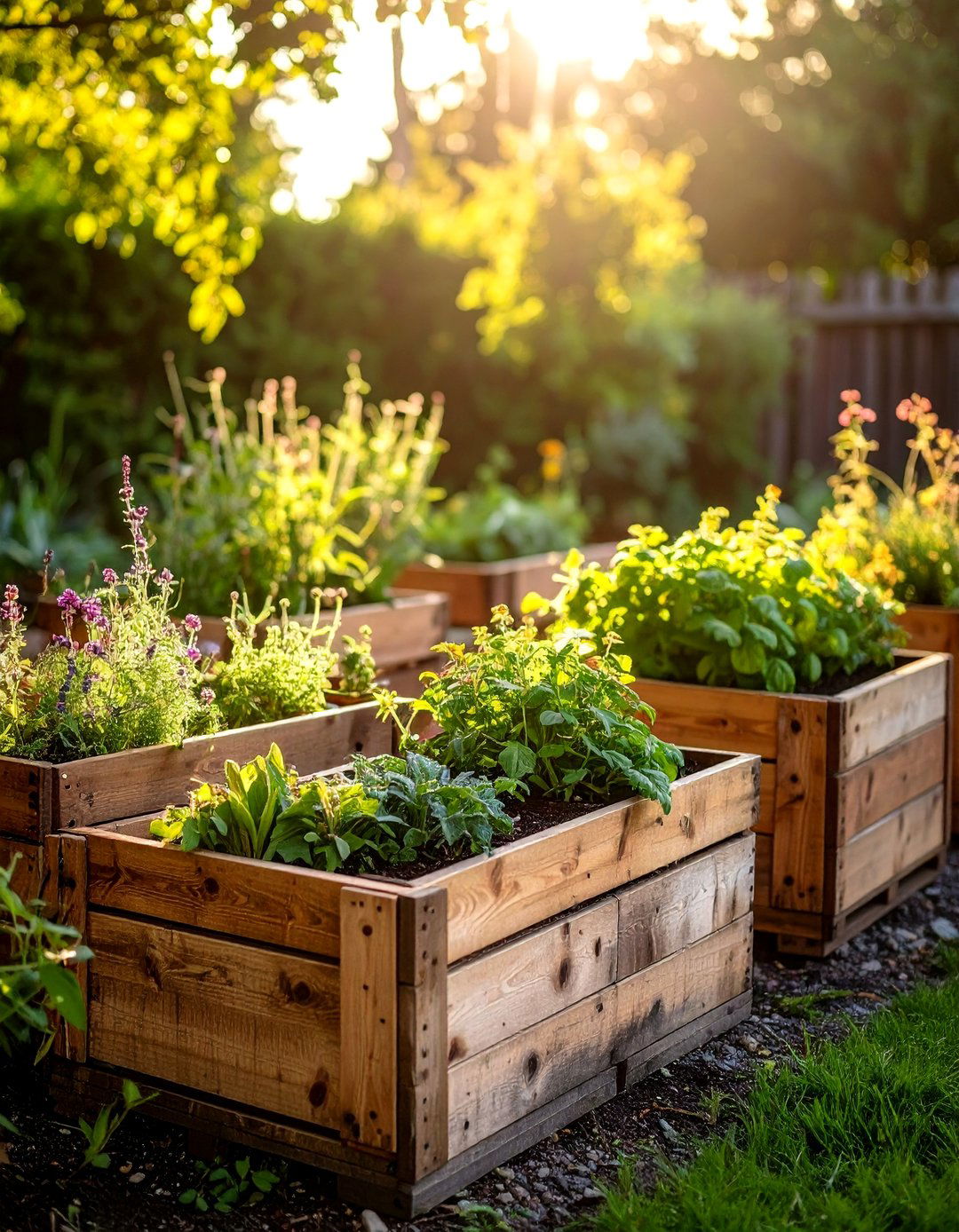
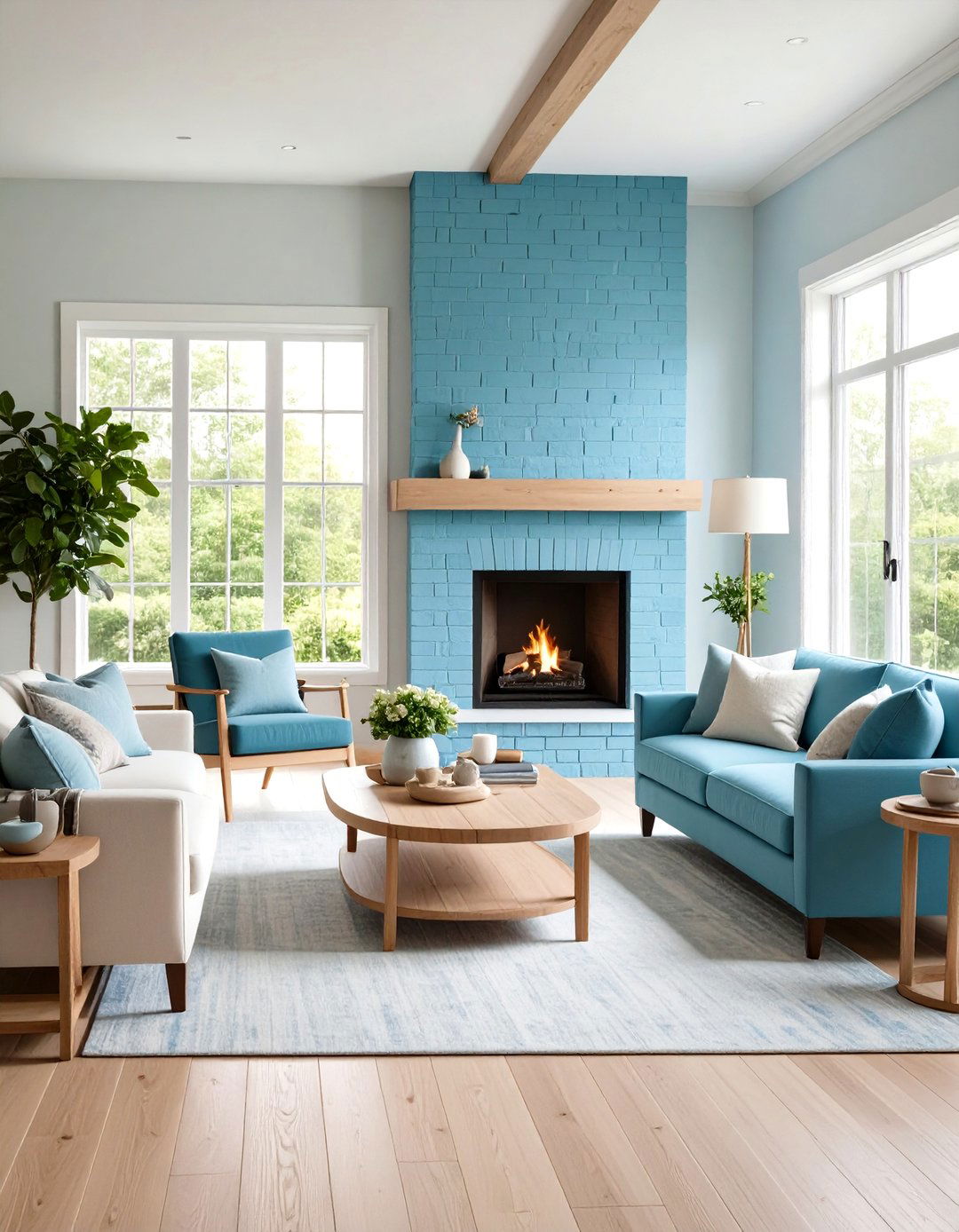
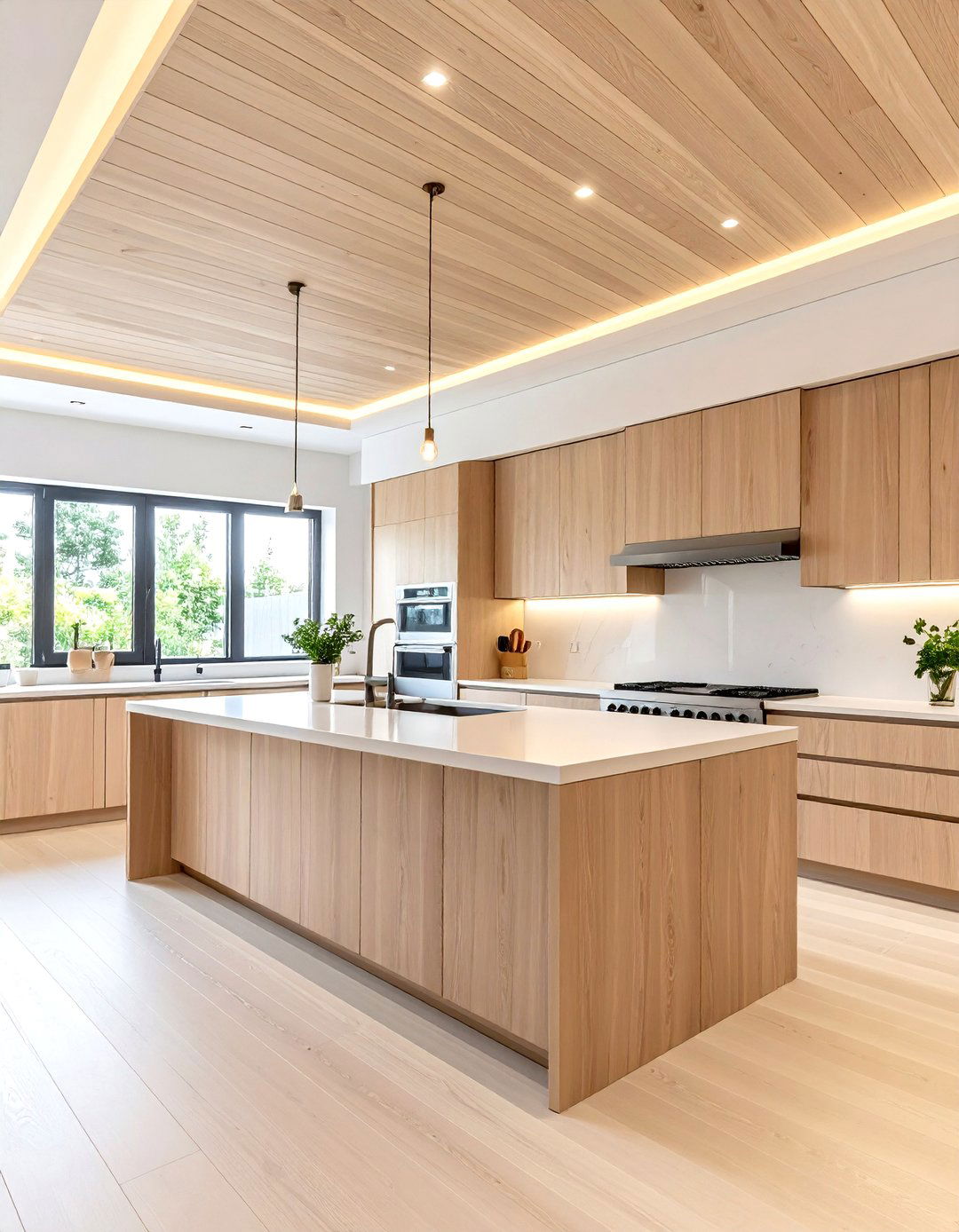


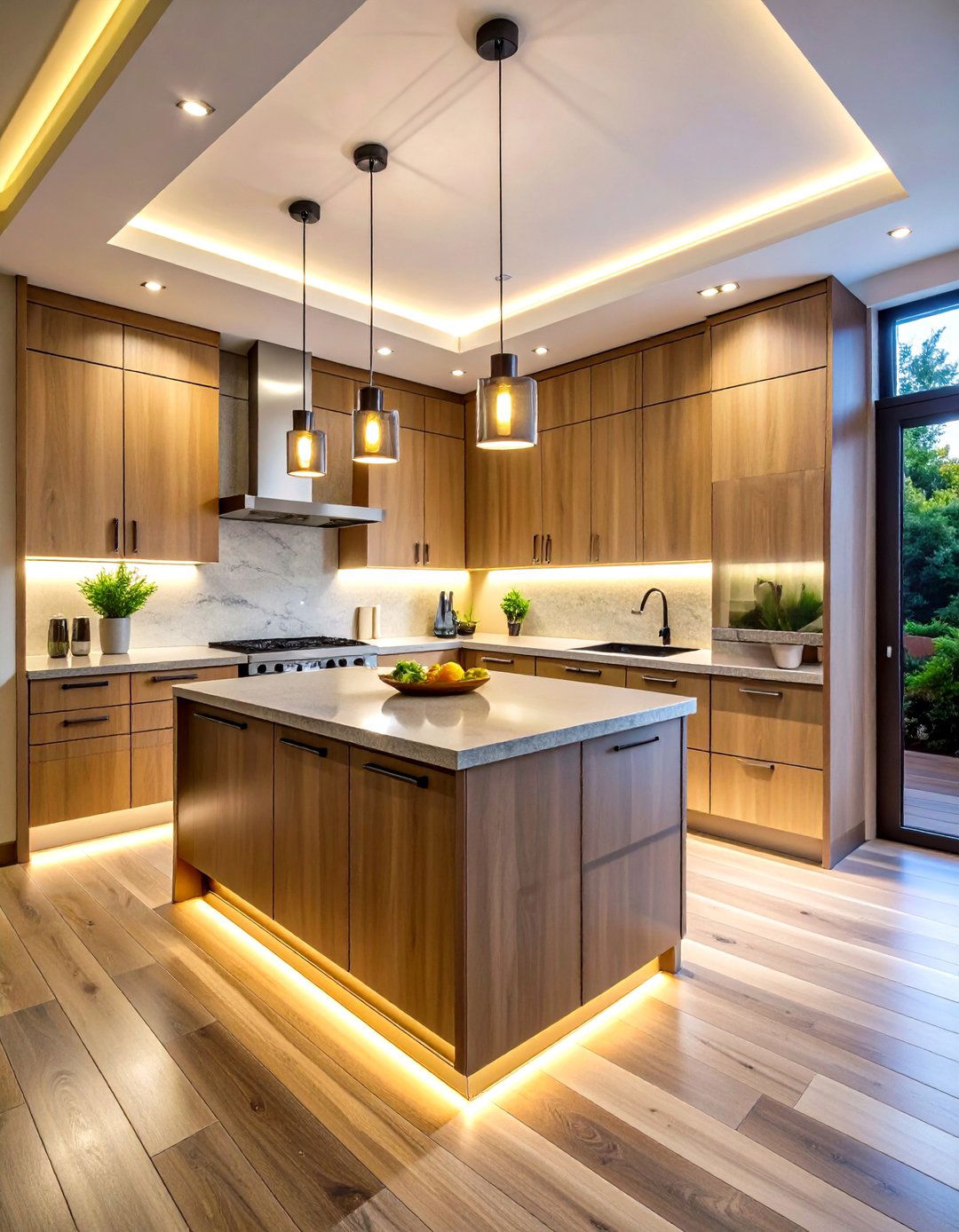
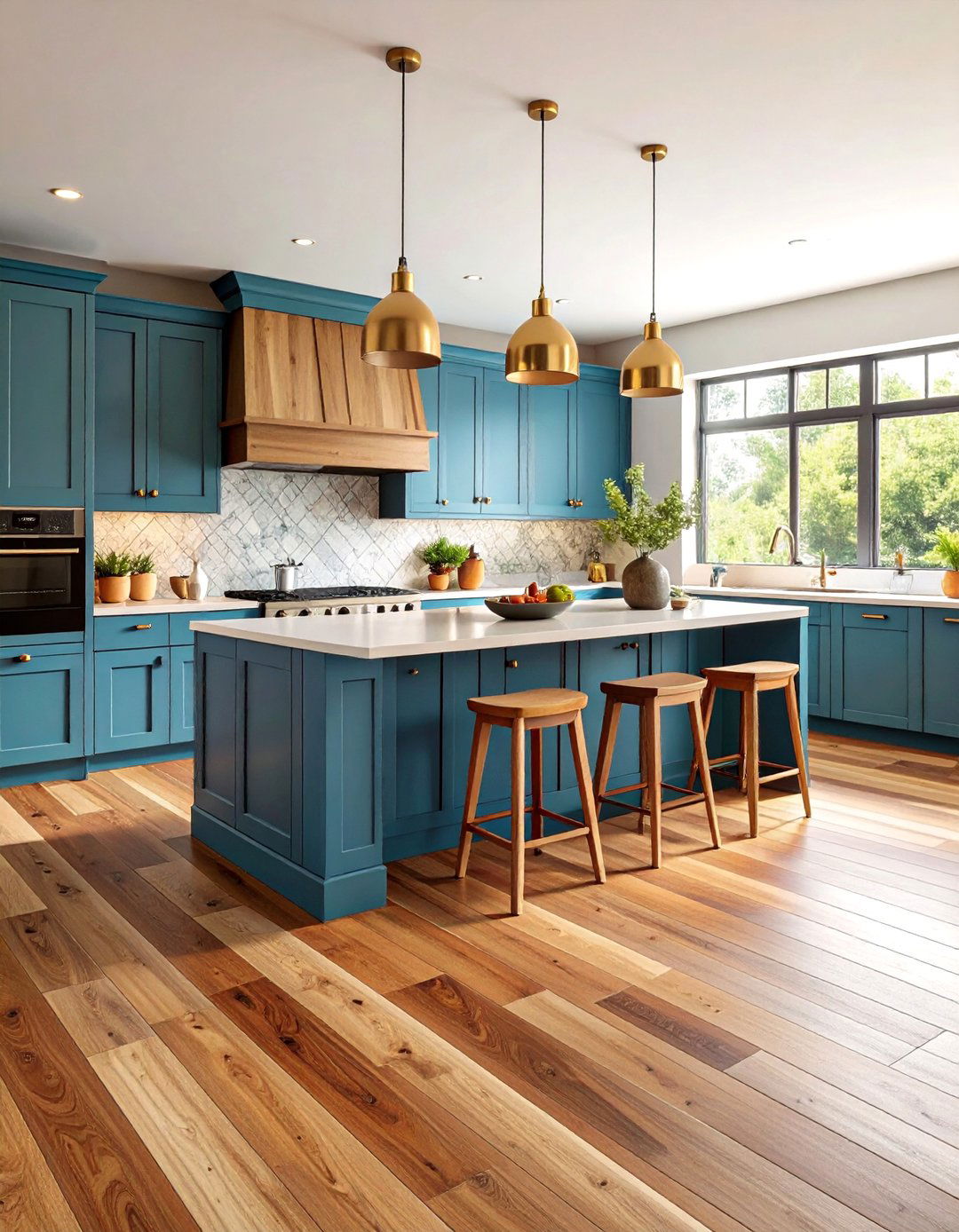
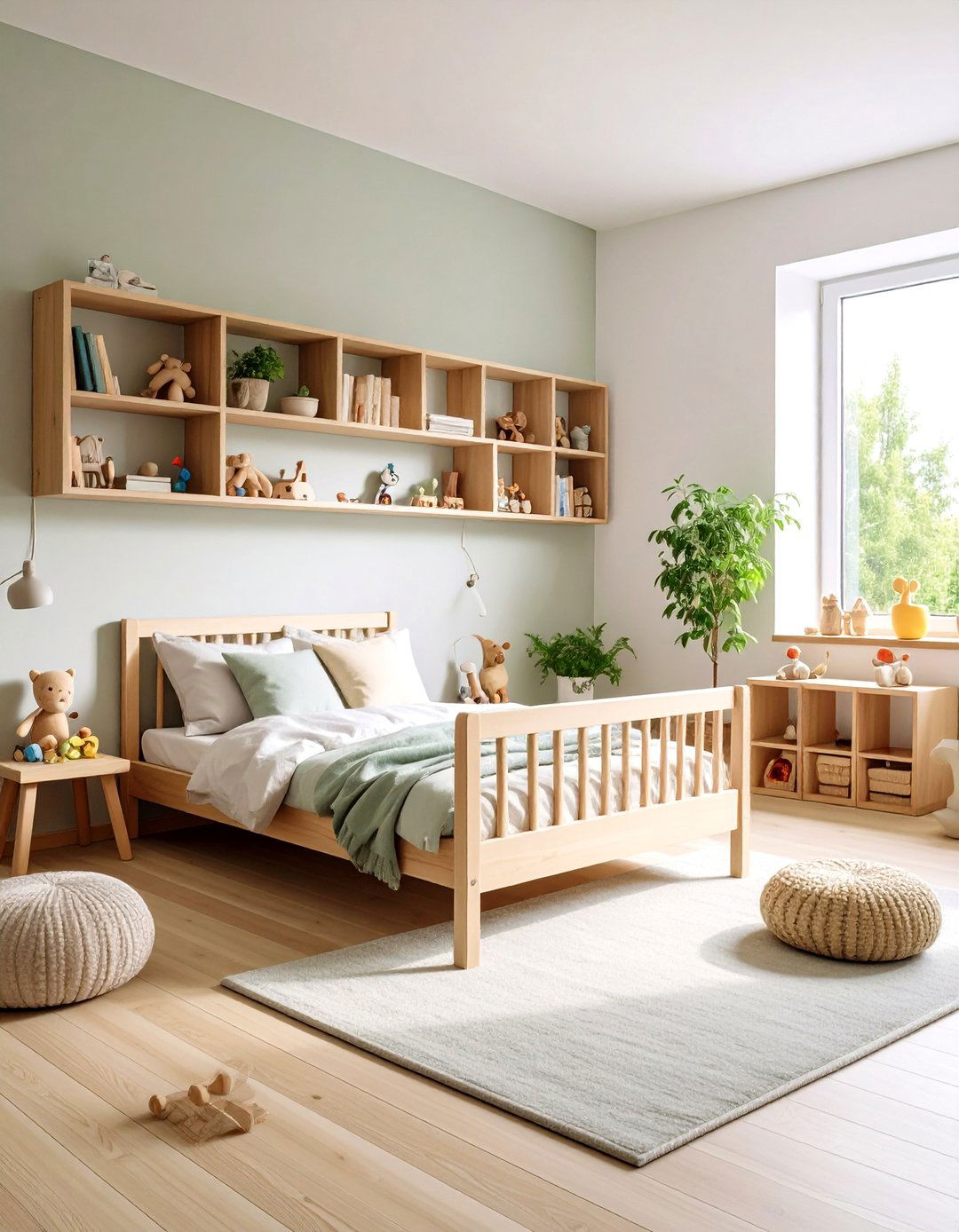
Leave a Reply